So once again being on my own, travelling at a more relaxed pace, I decided to take a day or two and do nothing. I was trying to plan the next leg of my trip as I had no clue what there is to see in Chile nor where I was going to go next. However the plan seemed to change everyday.
The hostel I had picked in Santiago was very nice which made it easy to lounge about and do very little for two days. After a day or two of doing nothing, I thought I should go and see Santiago therefore found a two walking tours of the city. Both were tip based tours.
So the first tour was a city tour of the main sights and we started off in the main square where there was a beautiful cathedral:
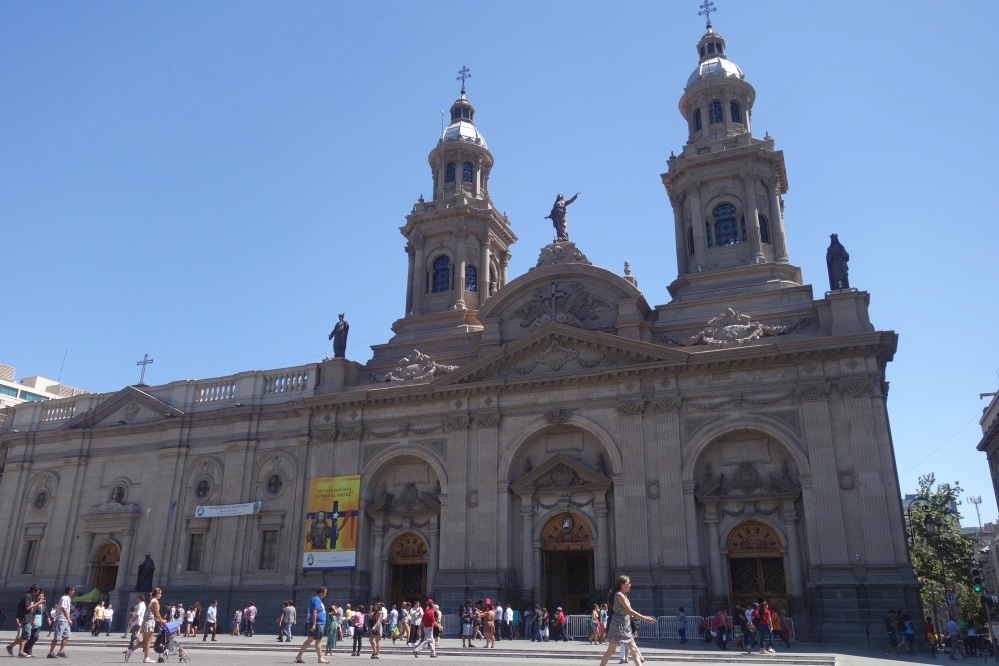
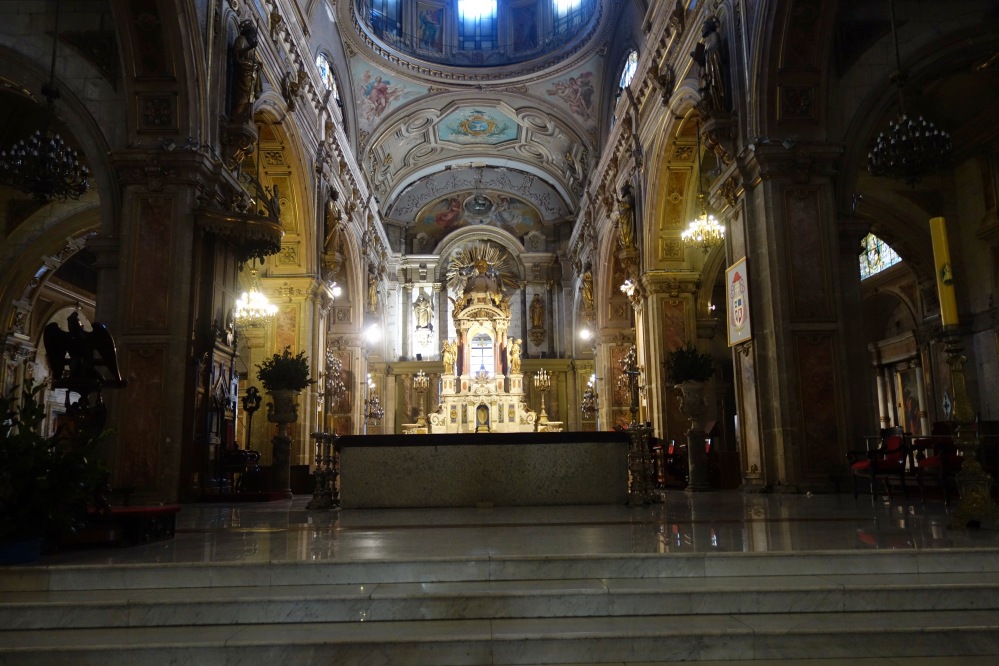
So this metropolitan cathedral was made in 1748 & had to be reconstructed many times for two main reasons. The first was the Mapuches. The Mapuche are the main indigenous group from Chile. Walking around Chile you see very few indigenous people with majority of people looking very european. I think around 8% have Mapuche routes so you can imagine what happened to the rest. It really hit me when I got to Chile. In all other countries it was easy to differentiate the foreigners from locals by skin colour however in Chile and Argentina you could very easily be in Spain. Anyway so the Mapuche invaded the city a couple of times over history and destroyed the Churches that the Spanish built. The second main reason is earthquakes. Chile is on a major fault line and is the city with the most earthquakes in the world with one of the biggest recoded in history hitting in December 2015 at 8.4. It seems 2015 was the year for earthquakes across the world! Essentially all buildings are essentially earthquake proof therefore they have very good engineers.
The Spanish first came to Santiago in 1535 and the expedition was led by Diago Almagro. He was one of the conquerors who first conquered Peru and then came to Chile in search of more silver and gold. However to get there they had to cross the Andean range, coming from Cusco. So after a terrible trip through the andes they finally arrived at the valley which is modern day Santiago and they found the Mapuches. The Mapuches put up a big fight against the Spanish and the Spanish had to retreat back to Cusco. So then they decided not to come back and instead went to the north and found the Atacama desert. The driest desert in the world. They reported back back that there is nothing to see in the south and not to go there. However after a few years another Spanish man wanted to go there again and his name was Pedro De Valdivia.
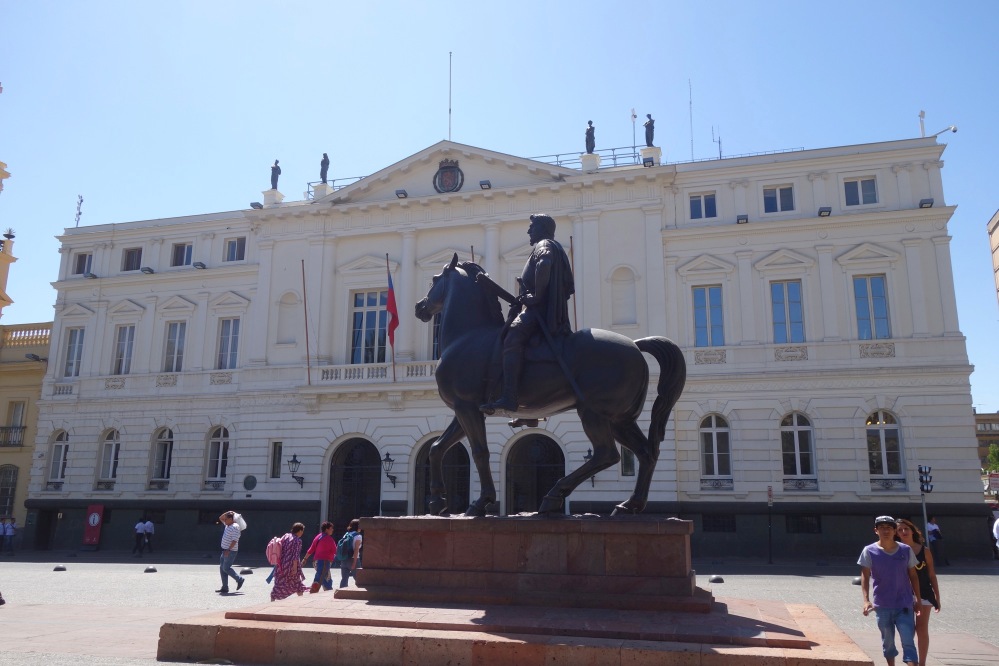
In 1540 he led an expedition of 150 Spaniards into Chile, where he defeated a large force of Mapuche and founded Santiago in 1541.
Today Santiago is the capital of the country (population 7m) with 40% of the population living in Santiago. The city Santiago is divided into 32 comunas which is like a small city with it’s own administration.
Right opposite this was the post office which was a Neo-Classical, very french style. It was a VERY fancy post office but it used to be the presidential palace but now used as the post office. A lot of government buildings in a lot South American capitals have this Neo Classical, french style. This is because when these buildings were built – everyone wanted to be like France, specifically Paris. A lot of south americans dreamed of going to Paris.
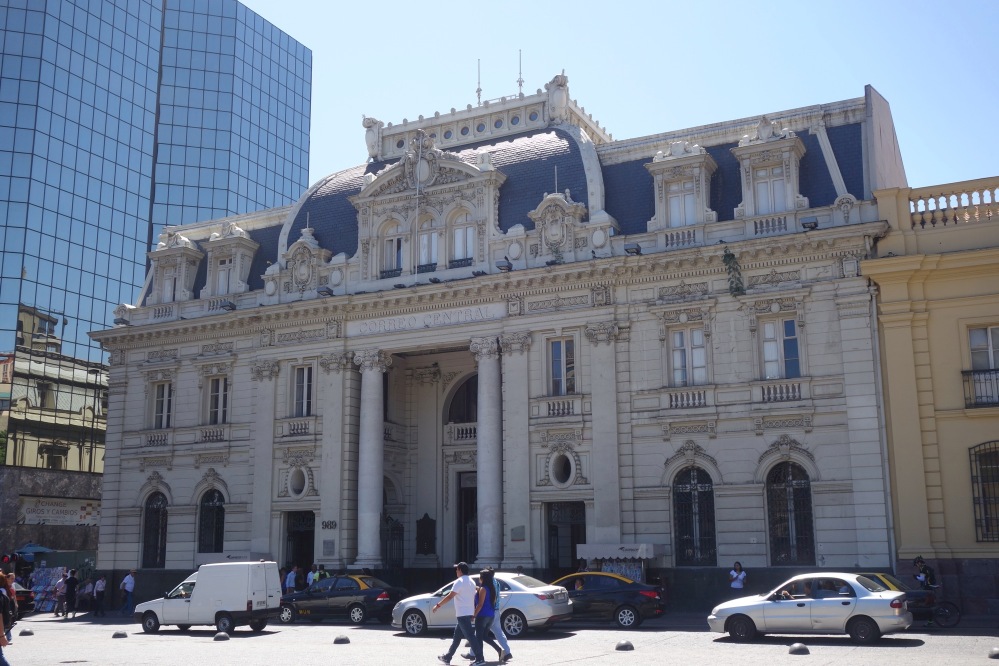
We then saw the statue of Santiago (Saint James one of the 12 apostles of Jesus). The Spanish were devout Catholics. Santiago de Compostela in Spain is the most religious city in Spain and a main religious city in Europe. Therefore a very important Catholic city. The conquers of Chile put the name of this saint to this city.
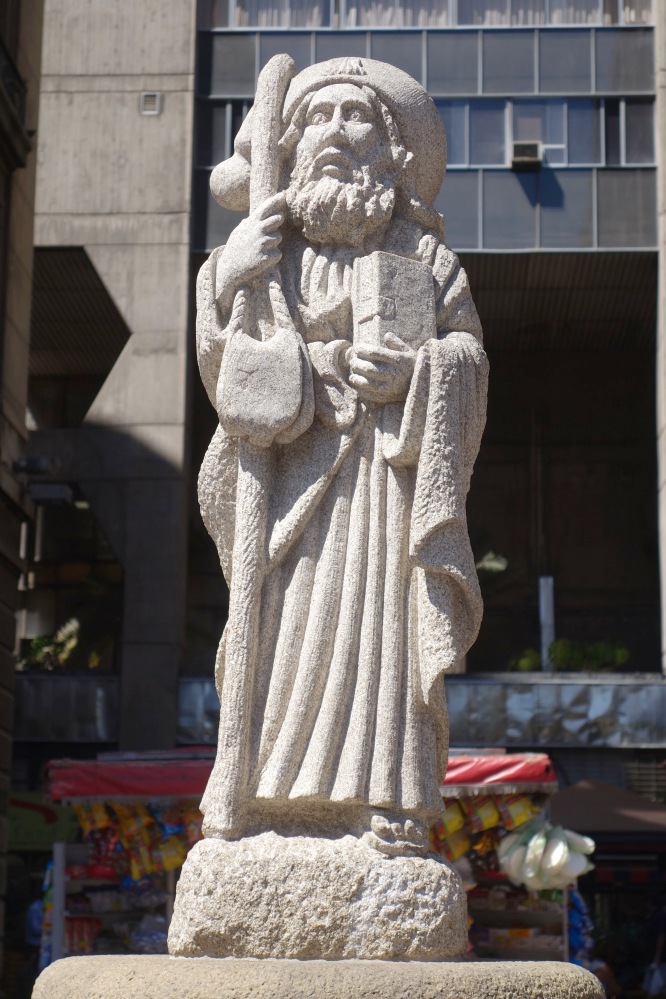
This next statue represents how everything changed for the indigenous groups when the Spanish conquerors first came to Santiago. Essentially to symbolise that the cultures were broken:
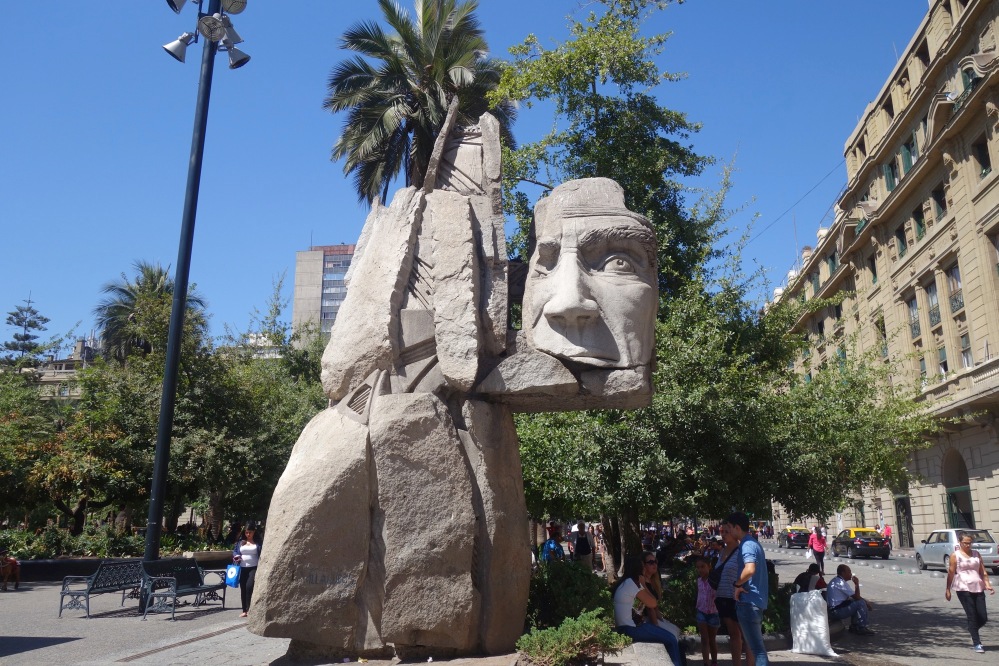
We then got introduced to the concept of ‘Cafe con piernas’ or Coffee with legs. So the coffee in Santiago isn’t really that good so to get people drinking they have these coffee shops called coffee with legs where they have very good looking girls, wearing short skirts serving coffee. Apparently it’s very popular! Haha.
After that we went to Plaza de la Constitucion which has the presidential palace. There is a lot of quite recent history surrounding this area. In Sept 11 1973 there was a military coup. To do this they bombed and destroyed the right side of the presidential palace, whilst the socialist president was still inside. On that day started one of the major dictatorships in South America. The 70’s and 80’s was a hard time for Chile due to the cold war. During this time a lot of people were killed, a lot disappeared and was the longest dictatorship in south american history. The name of the dictator was Augusto Pinochet. The people were not happy under this regime and he was under increasing international pressure to restore democracy to the country. Therefore in 1982 he held a referendum which was his idea of democracy as he would torture and persecute anyone who voted against him. So he won the referendum. During this time a lot of people fled the country and many ended up in western Europe. In 1988 he held yet another referendum that this time he lost and he left power in 1990. Since 1900 democracy was restored but then Pinochet was still general of the army & more importantly a senator for another 10 or so years. During his time in power he made a change in the constitution whereby after being president you can chose to be a senator and senators cannot be tried for past crimes. Then in 1998 he went to London to have some medical checks done as he had a good relationship with Margret Thatcher (the iron lady). In England however a Spanish judge arrested in at the hospital. There were big protests in the street of Santiago by his supporters outside the Spanish and English embassies. He then stayed in hospital for one year claiming he was too sick to leave. After a year they decided to have the trial in Chile. Before the trial began he died in 2006 at 96 years old. His death showed just how politically divided the people of Chile were. There were a lot of people crying on the streets claiming that the man that saved us from Communism is dead and there were also a lot of people celebrating with Champagne saying finally the dictator is dead. Those were crazy times in Chile when Penochet died. The current president of Chile is a woman, Michelle Bachelet. Her father was killed during the dictatorship by the military, she was a refugee in eastern Germany during this time so she has a close relationship with this hard time. In October 2015 she made a big announcement that she is going to change the constitution written by Pinochet.
So this is the presidential palace:
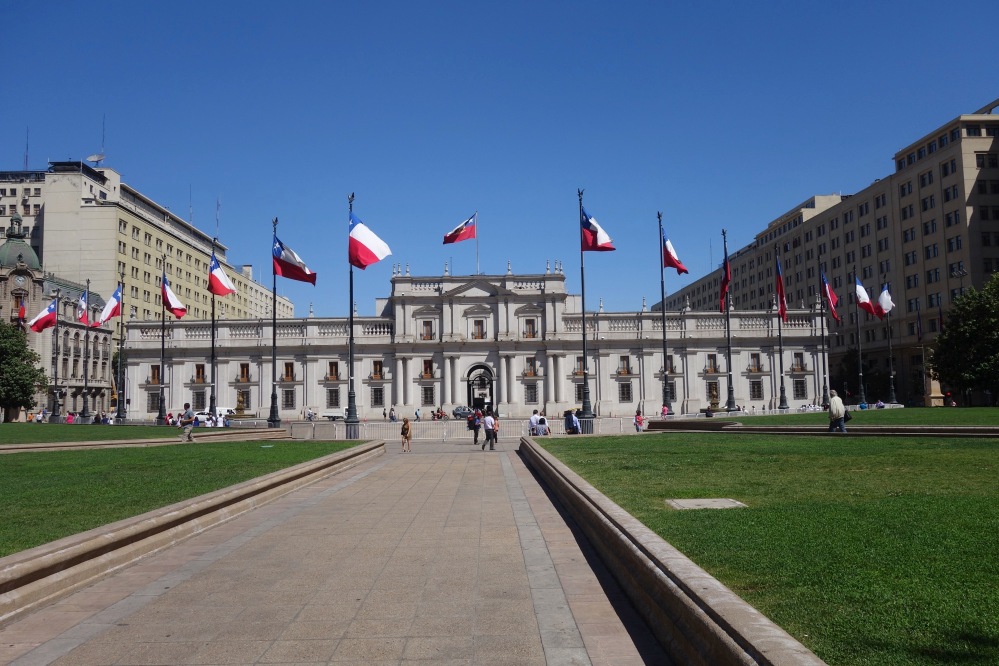
We then went to the wall street of Santiago called New York Street. The main financial district in Santiago is called Sanhatten (Santiago and Manhattan) where you can find the tallest building in South America.
So the biggest industry in Chile is mining. The biggest copper mine in the world is in the north of Chile. Their economy relies so heavily on copper that fluctuations in the price of copper has significant effects on the value of the Chilean Peso. The second biggest industry is wine and third is fish. There is a lot of fishing in the south and production of Salmon. One of the major economic changes that Pinochet made in the country was the adoption of milton friedman neoliberalism. This was mainly due to the the Chicago Boys who were a group of Chilean economists, the majority of whom trained at the Department of Economics of the University of Chicago under Milton Friedman and Arnold Harberger. As part of this there was no free education which costs around USD 8k a year which is a lot considering the average salary is USD 800 a month. Over the last few years there have been a lot of demonstrations and now the government are trying to change the system.
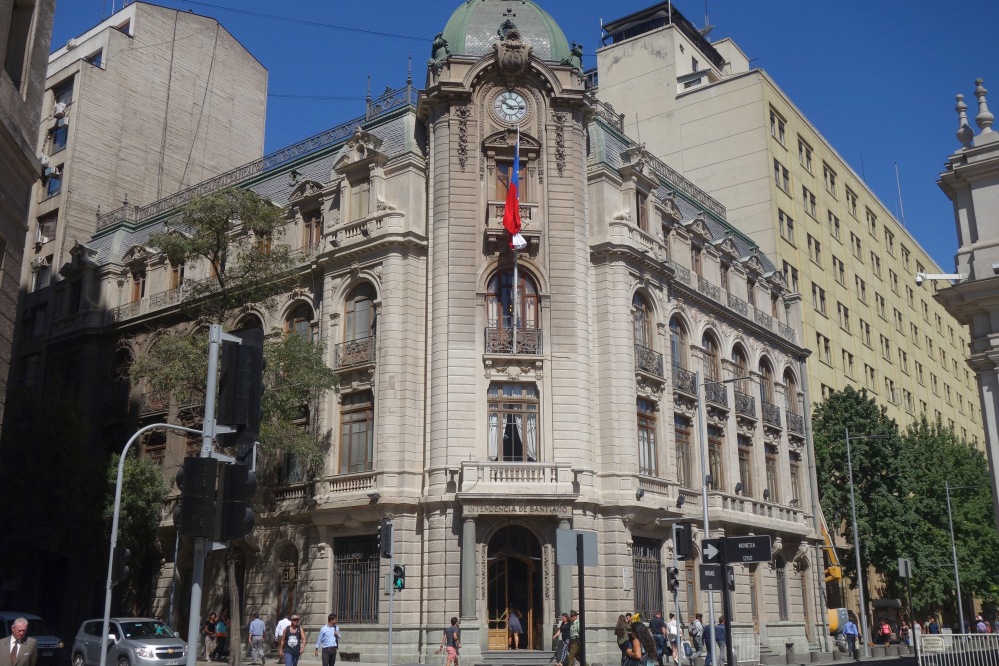
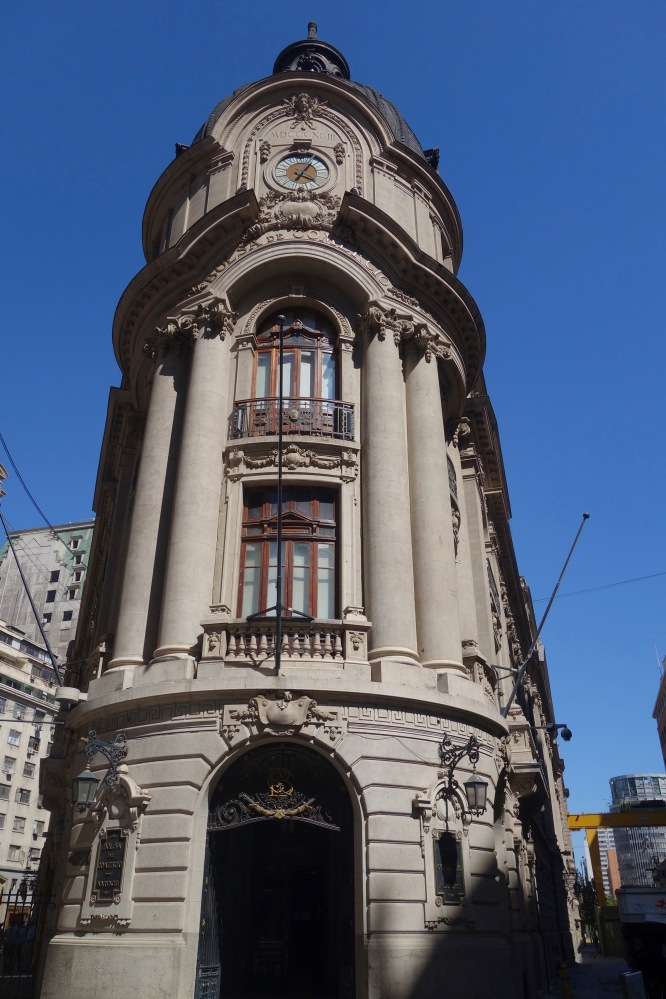
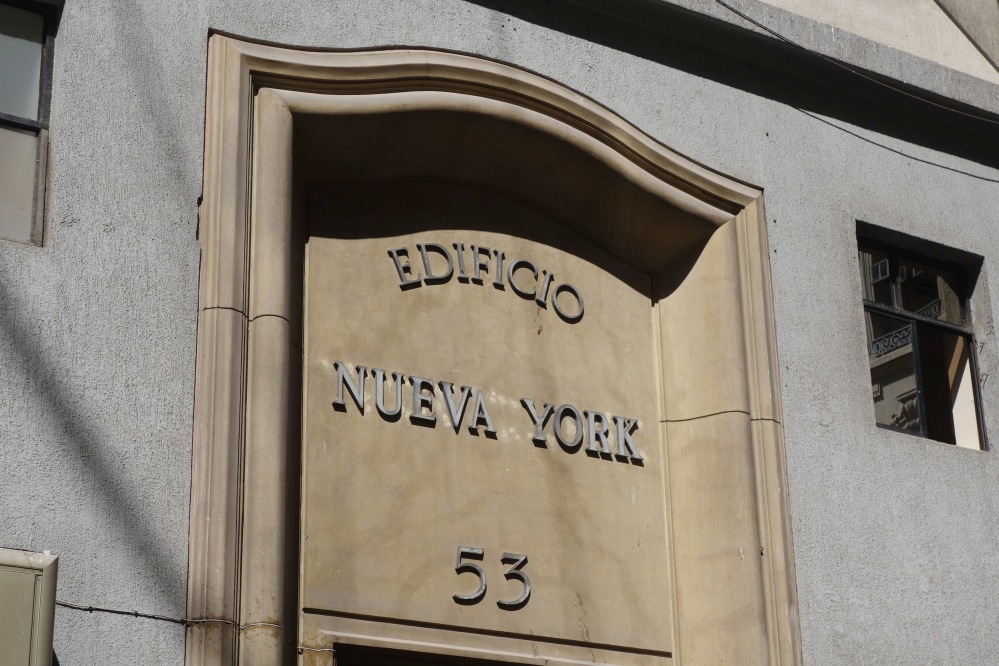
This stuff I saw sold all over the place:
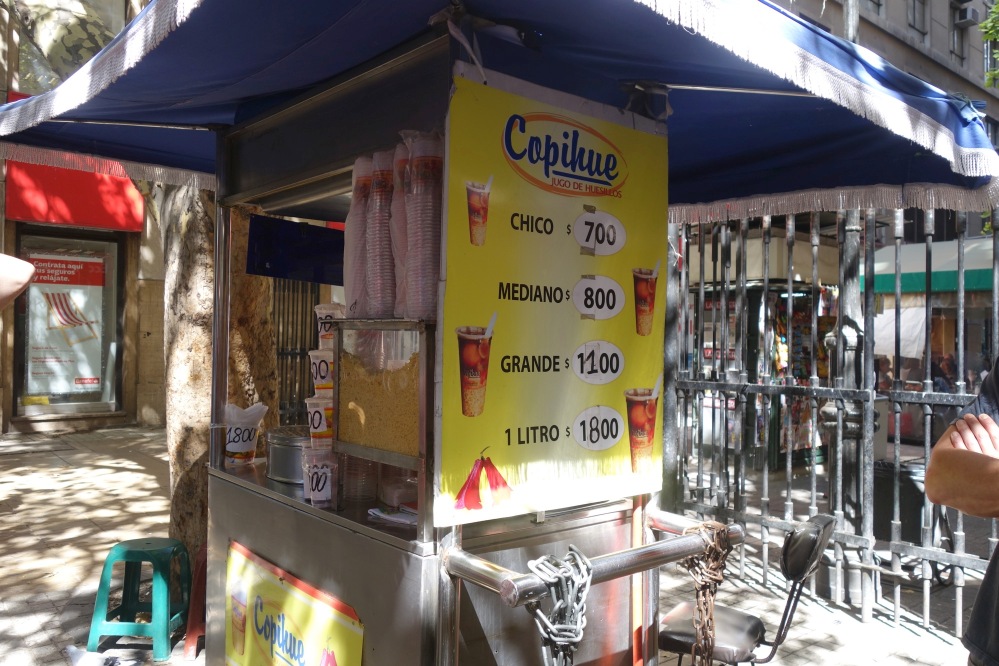
It’s a kind of peach juice with grains of wheat. It’s VERY sweet and you drink it and then eat it. Very cold and refreshing.
Lastly we went to the park. The park is right in the middle of the city and was made in 1910. In this year the government wanted to make a celebration in Santiago and invite people from all over the world for the celebration. So they wanted to make Santiago a more beautiful city, and this meant more european and less chilean. On the other side of the park is also where the migrant and indigenous communities sell thing in market. Therefore the park and all surrounding buildings are made in the imagine of Europe. They then took the Chilean ‘ugly’ part and moved it across the river. Therefore if you walk on each side of the river the difference in architecture in stark. The park is full of ‘presents’ given by various countries. So first we saw the US present:
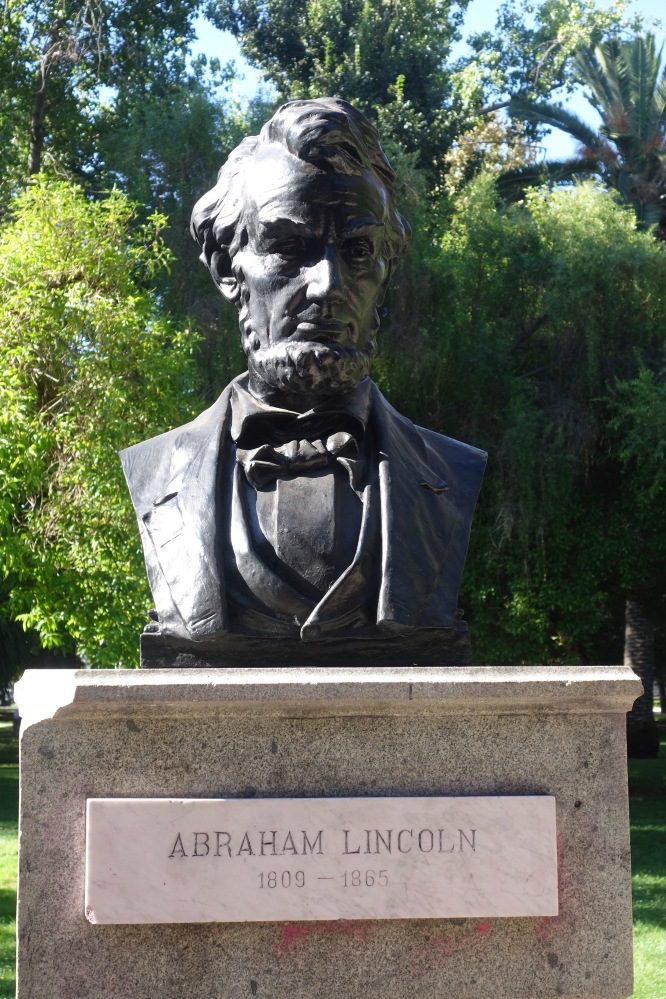
So this statue of full of writing and marks and this is mainly because of Nixon. The US government supported the dictatorship government in Chile, Pinochet, and other parts of South America. Therefore a lot of people are still angry about that today.
Next up was the German gift, a fountain:
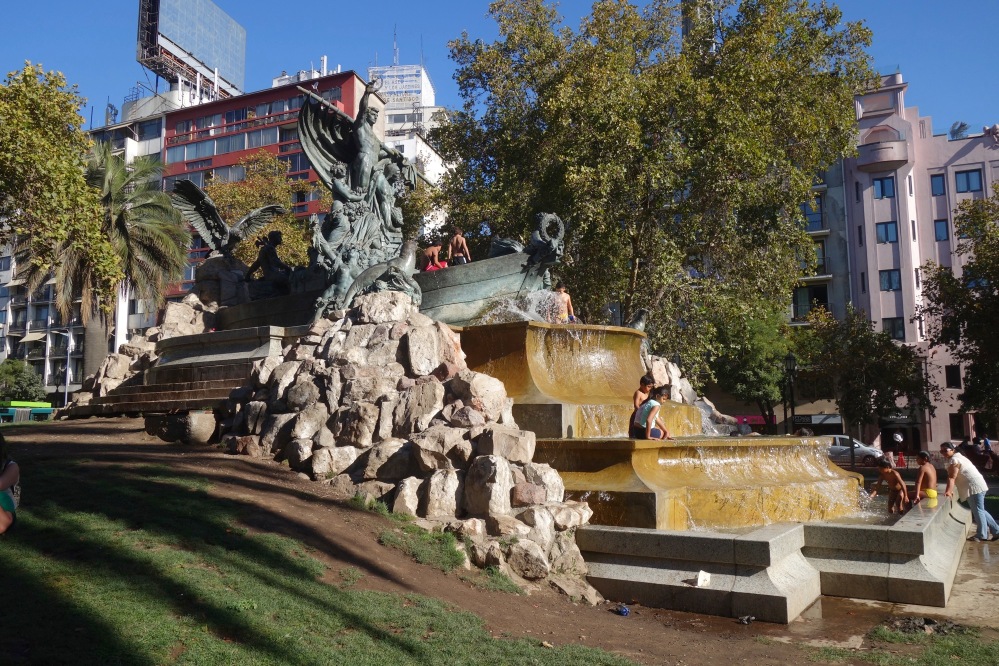
The German present was a lot bigger than the others due to history. In the 1800’s the government invited Europeans to come and colonise the south of the country which was mostly empty. The biggest community to come was from Germany. Which is why many cities in the south have a lot of German influence.
This about sums up the tour. We then walked around a student neighbourhood which had a lot of street art:
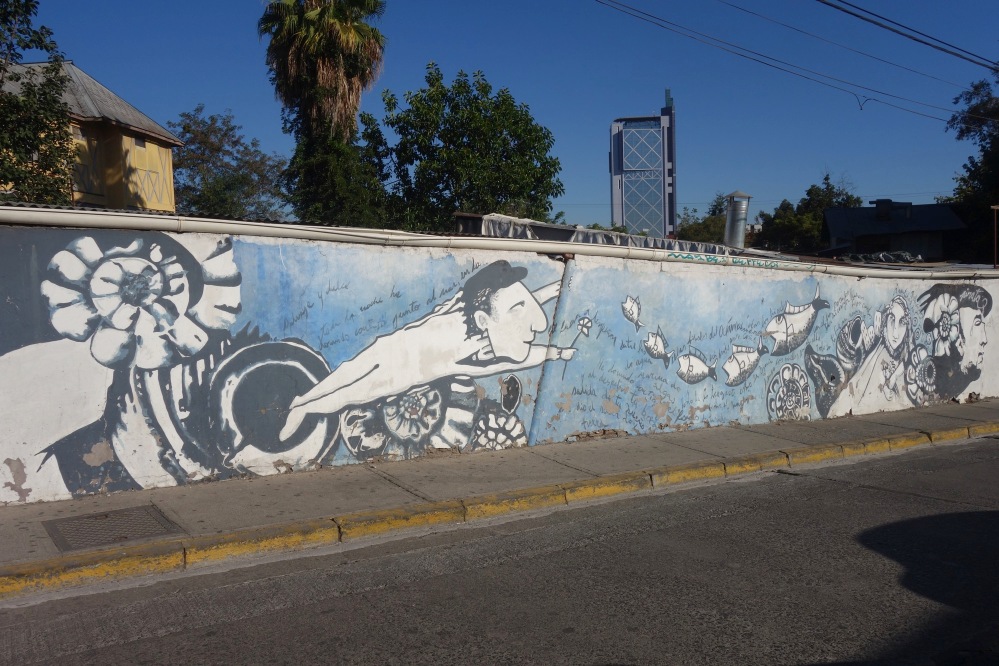
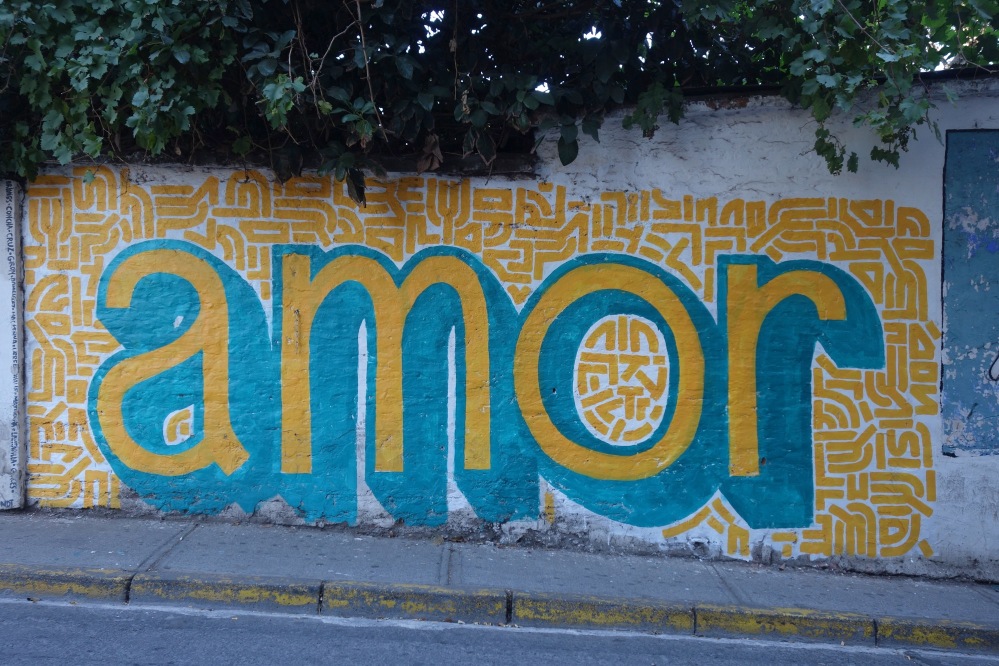
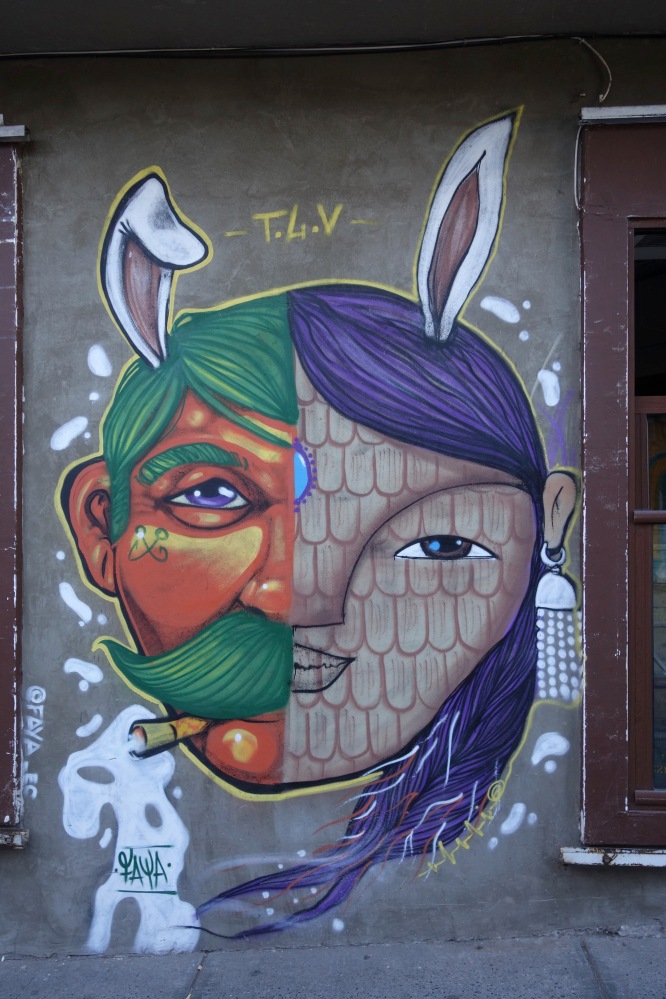
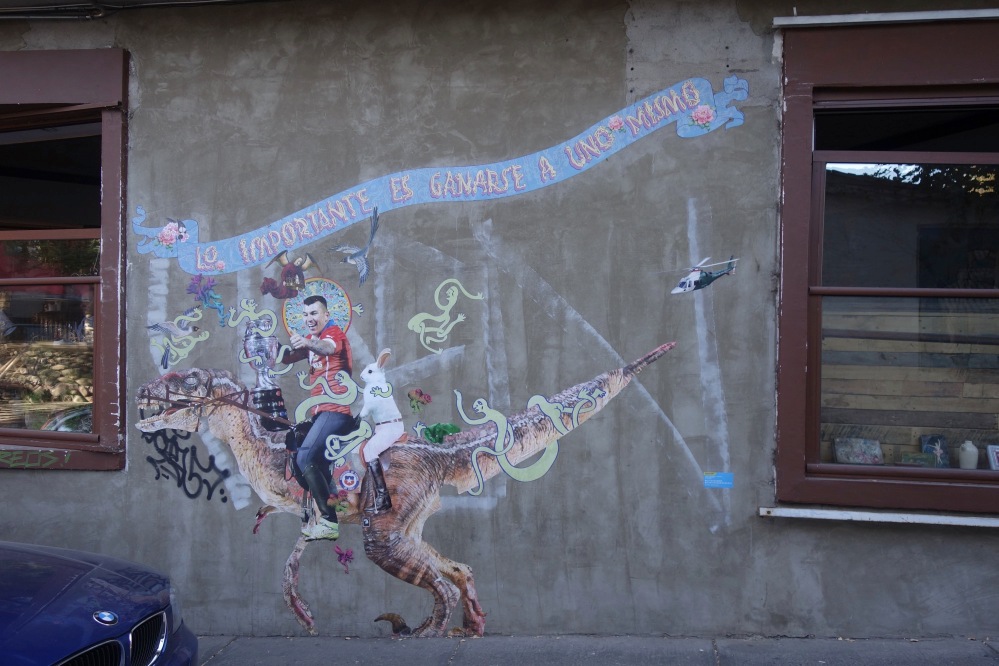
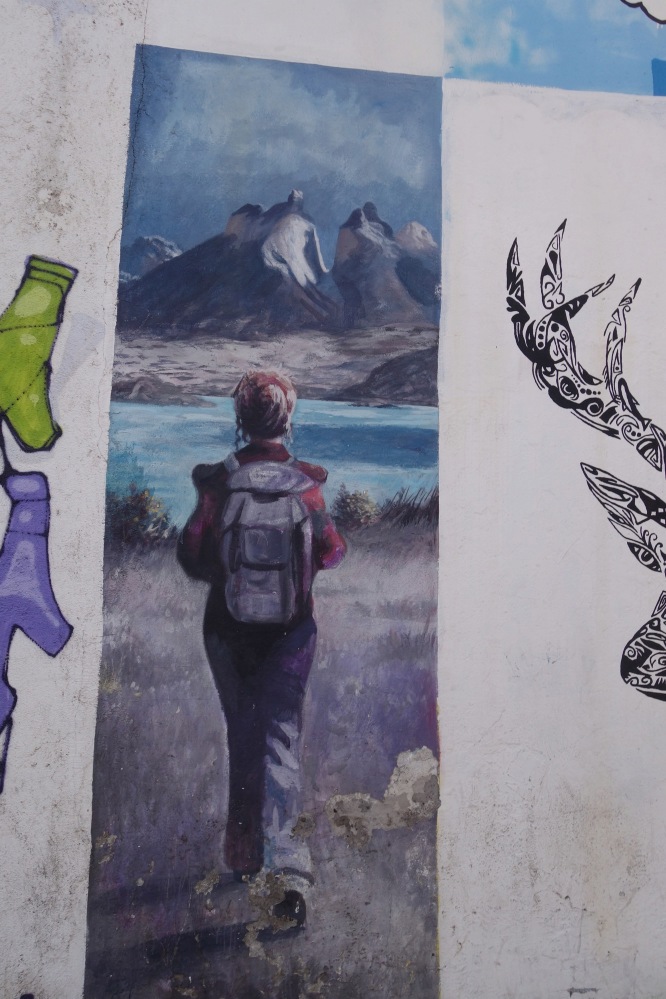
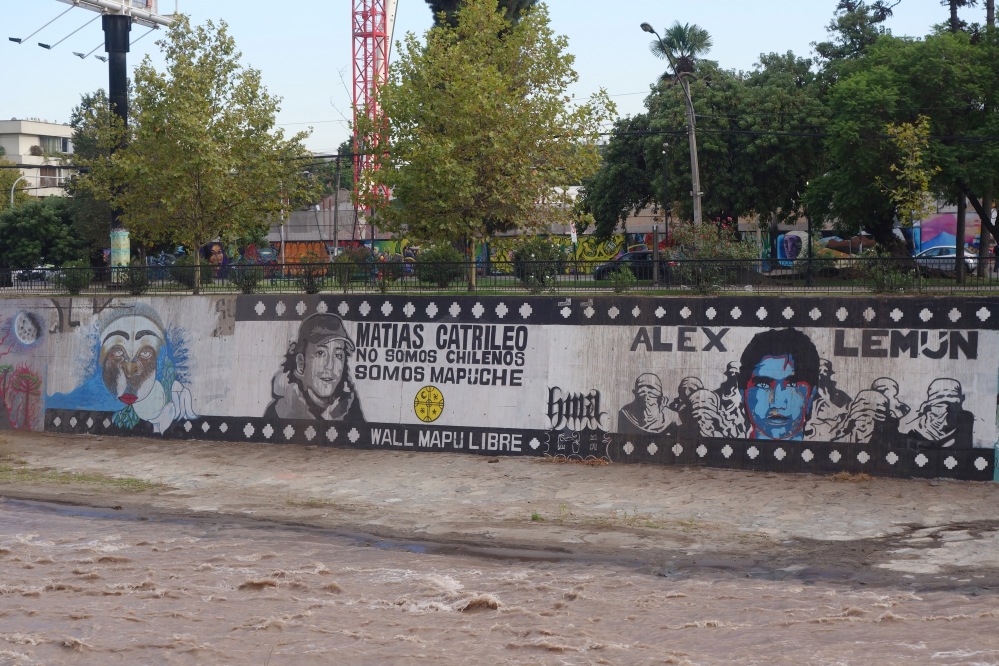
What is interesting is that Santiago periodically has major pollution problems. This is because it is a valley in the middle of two mountain ranges. On a clear day you can see the ranges from Santiago. Because of that the air doesn’t move too much and pollution doesn’t have anywhere to escape. In winter this is especially bad as the density of the air is higher therefore there is A LOT of pollution. They even have critical days with alarms and emergencies where the locals are not allowed to use their cars.
The other thing that is interesting is there is an oceanic current (humboldt) that comes from the south and runs along the whole coast of Chile. The south of Chile is Antarctica therefore the current bring VERY cold water with it. Therefore if you go to any beach in Chile, regardless of the outside temperature, the water will be FREEZING. Apparently a colder ocean translates into higher density of oxygen in the water and so you get a lot of different species of marine life.
With regards to food – one of the most popular dishes in Chile is called Choriana:
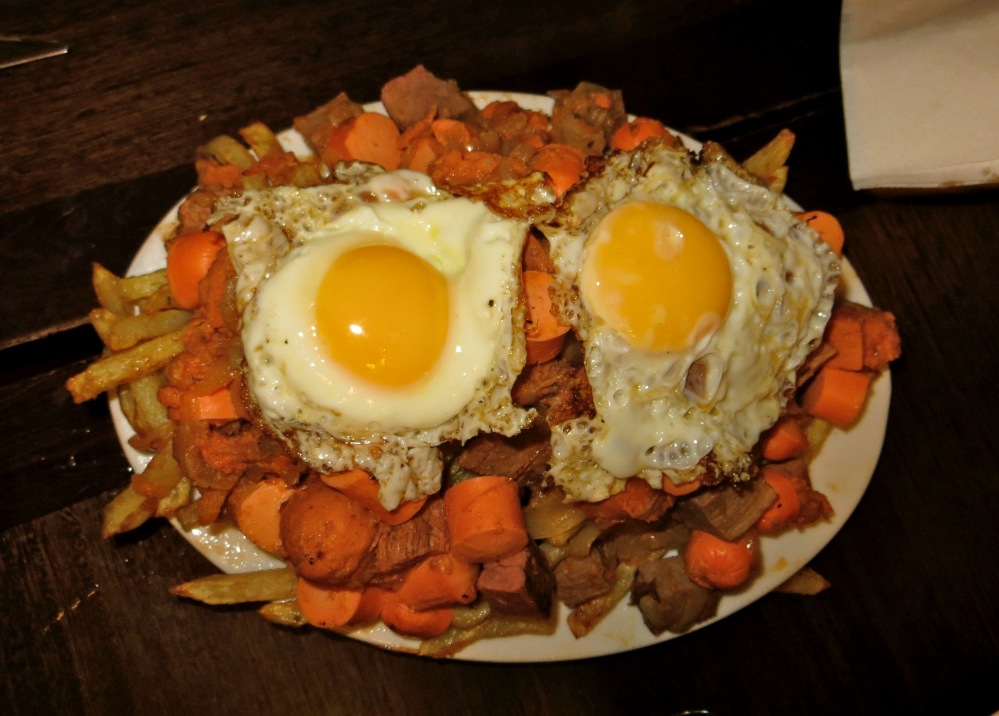
It’s a HUGE dish with fried onion, fried beef, a lot of chips & fried eggs at the top! A little crazy. IN addition to this there is a very famous national drink called Terremoto. This literally means earthquake and was invented when a big earthquake hit Chile and people lost their homes and everything and then to drown their sorrows they drank. So this is half a glass of the cheapest white wine you can find, a little bit of local liquor and finally a big piece of pineapple ice cream:
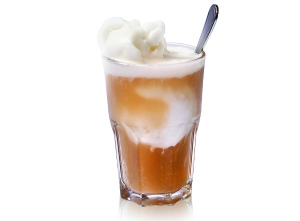
I tried it and didn’t think too much of it but worth trying I guess.
The next day I went to an ‘off beat’ tour of Santiago. This was again interesting. We started off visiting a load of markets and ended up at the main cemetery which was an interesting and very educational experience. So the first stop was Mercado Central which is the seafood market:
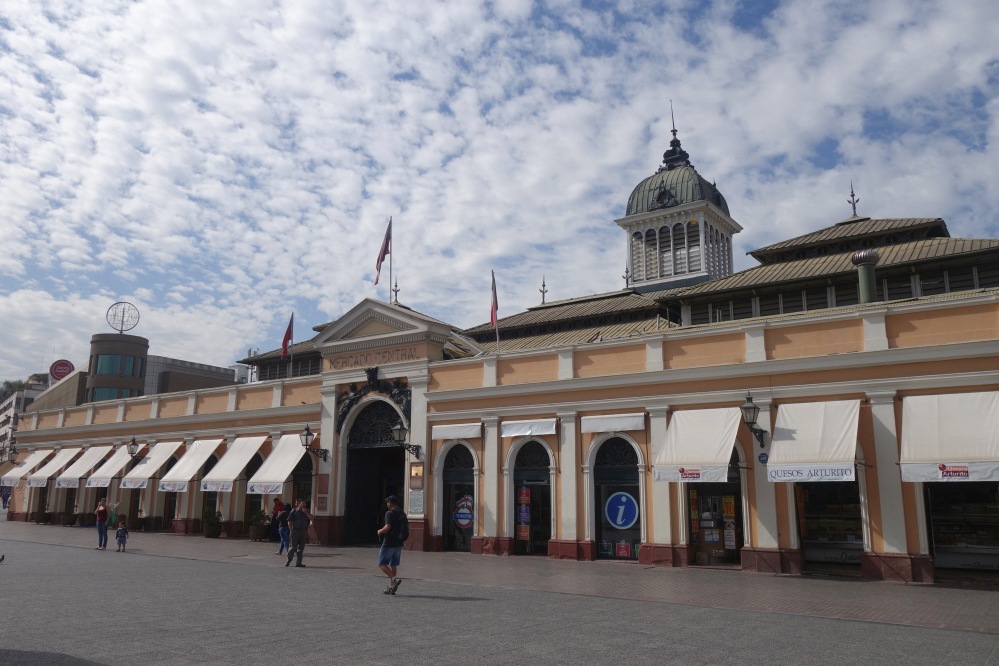
For almost 300 years it was the cities rubbish dump, until 1821 (independence from Spain), where the new government decided to put a marketplace there after cleaning it up. Then in 1864 there was a huge fire which caused them to think what to do with it next and it took them 8 years to design a new metal structure which now holds the most touristy area which is shared by a few restaurants, souvenir shops etc. On the outside of the market are the more local seafood restaurants so I went there for lunch after and this is what I had:
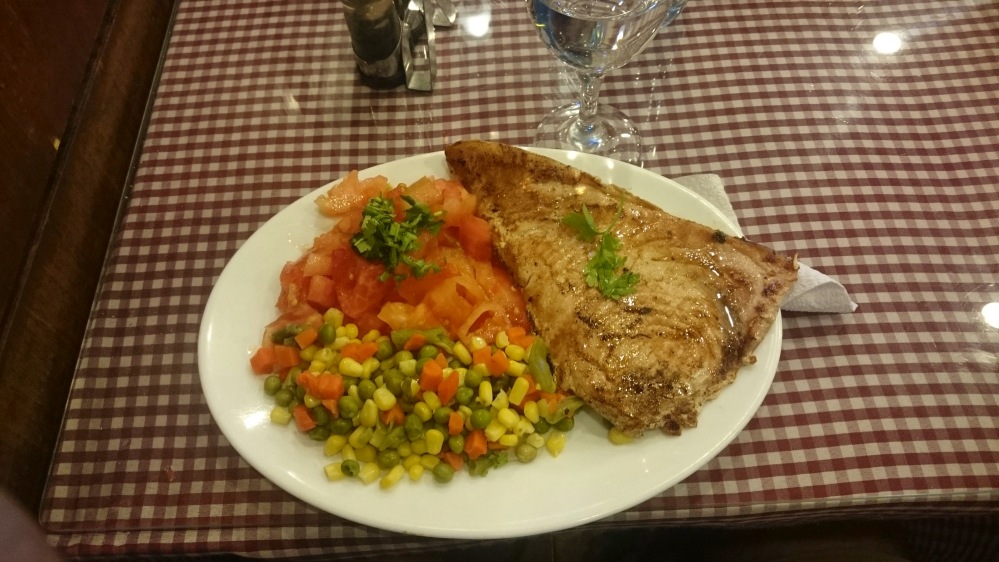
Can’t tell you what fish it is but was tasty. So this was the market:
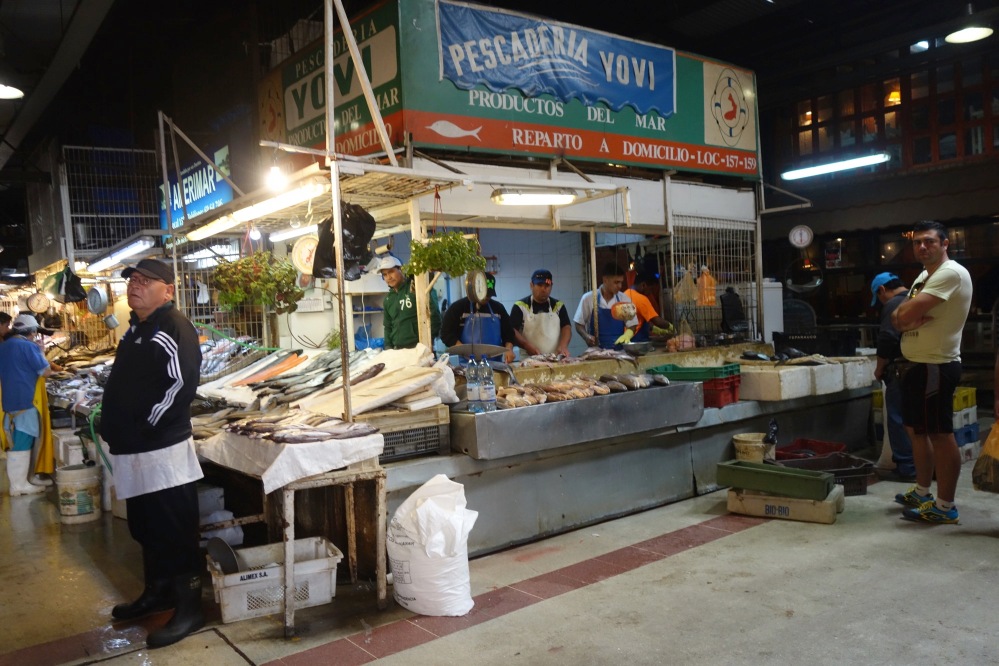
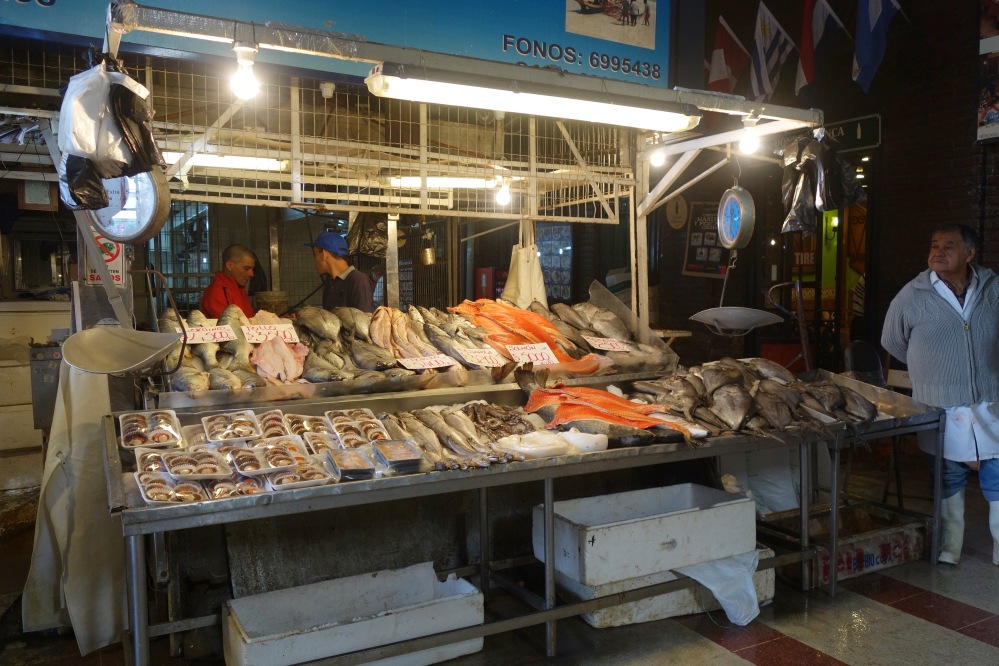
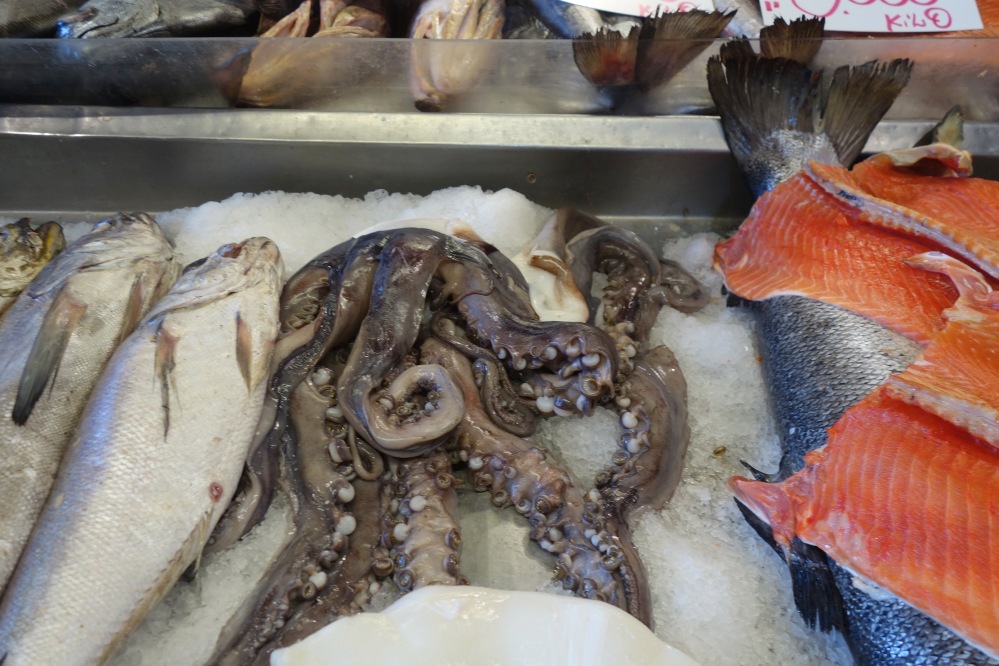
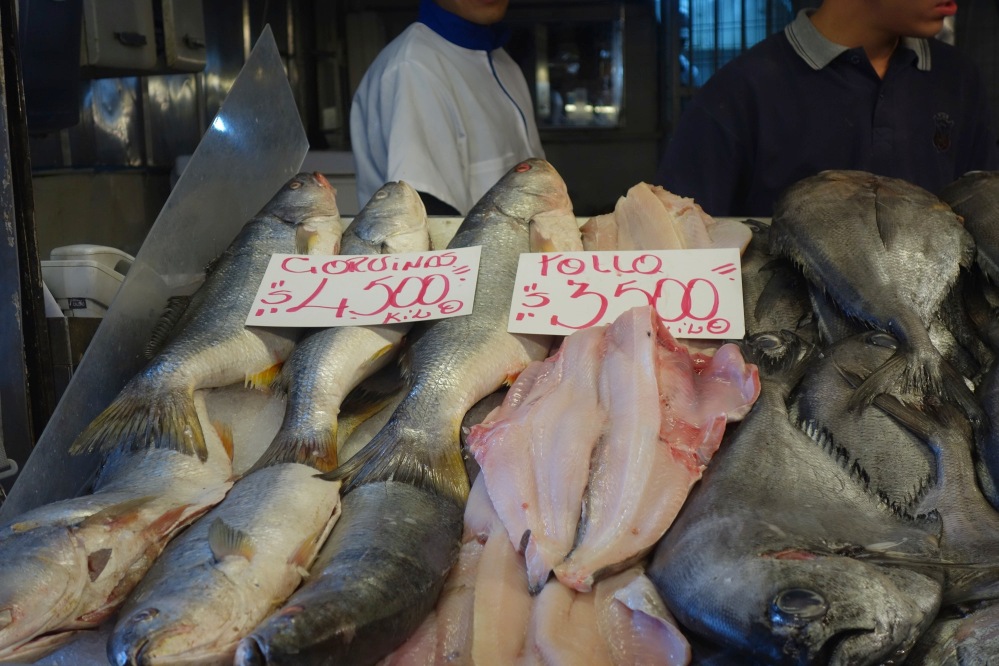
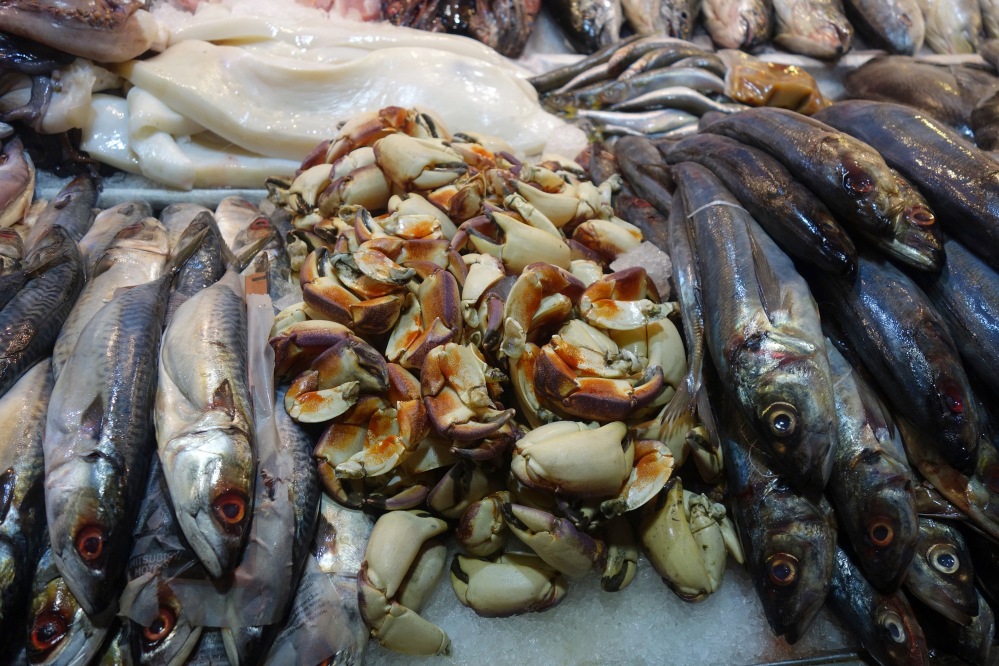
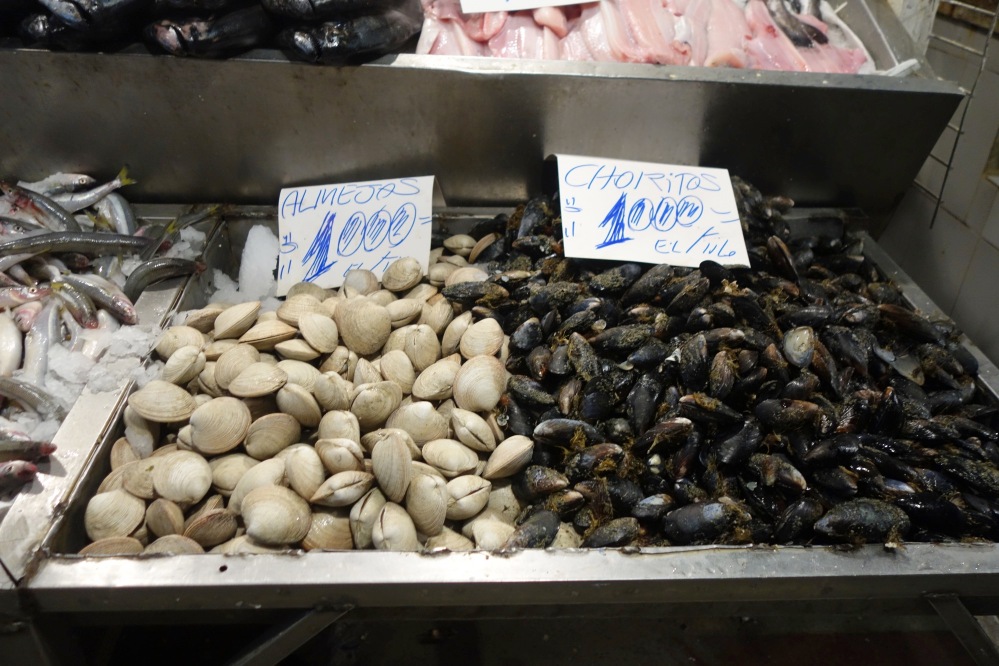
These were the dishes you could buy at the fancy end of the markets (in the middle):
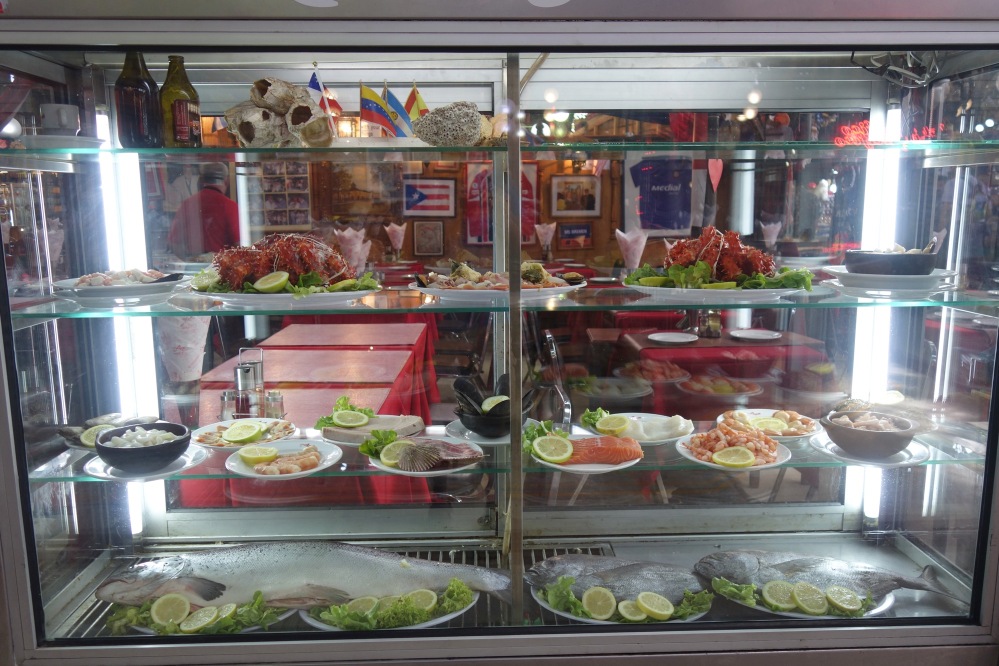
That big lump on the top left is king crab.
We then went to a market known as Vega. This is where most people do their weekly shopping and the top floor is more for electronics:
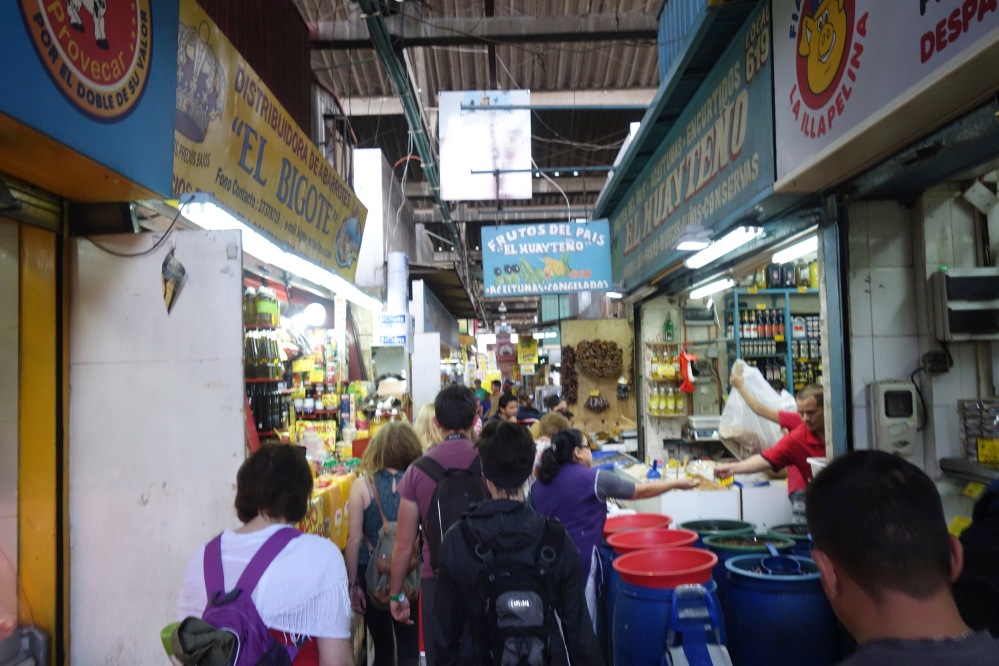
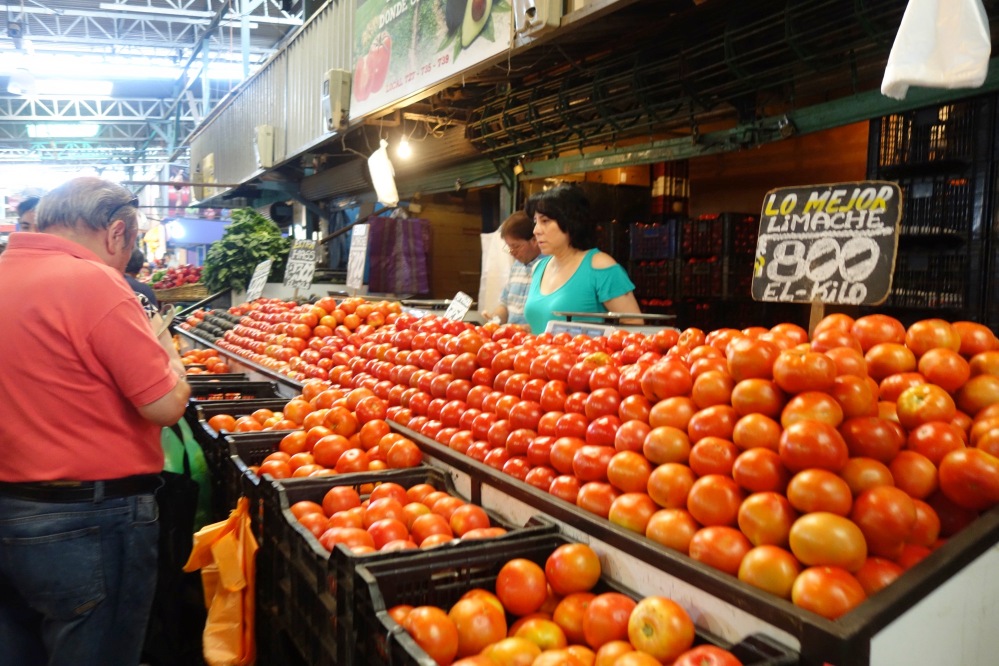
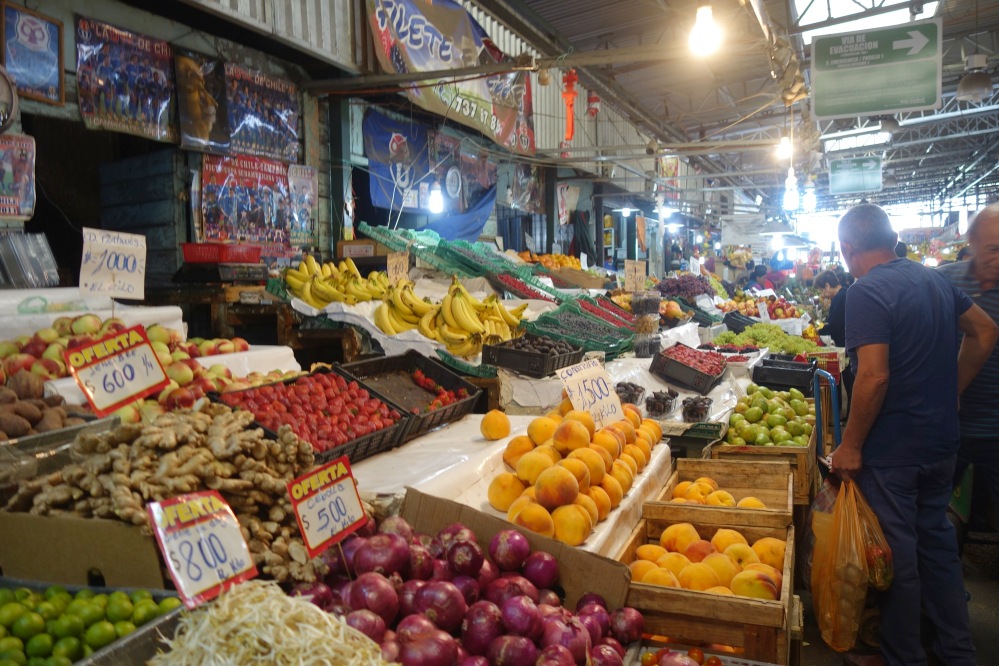
What was a bit odd is a lot of the shops only sold one kind of product. Outside the market we saw this sign:
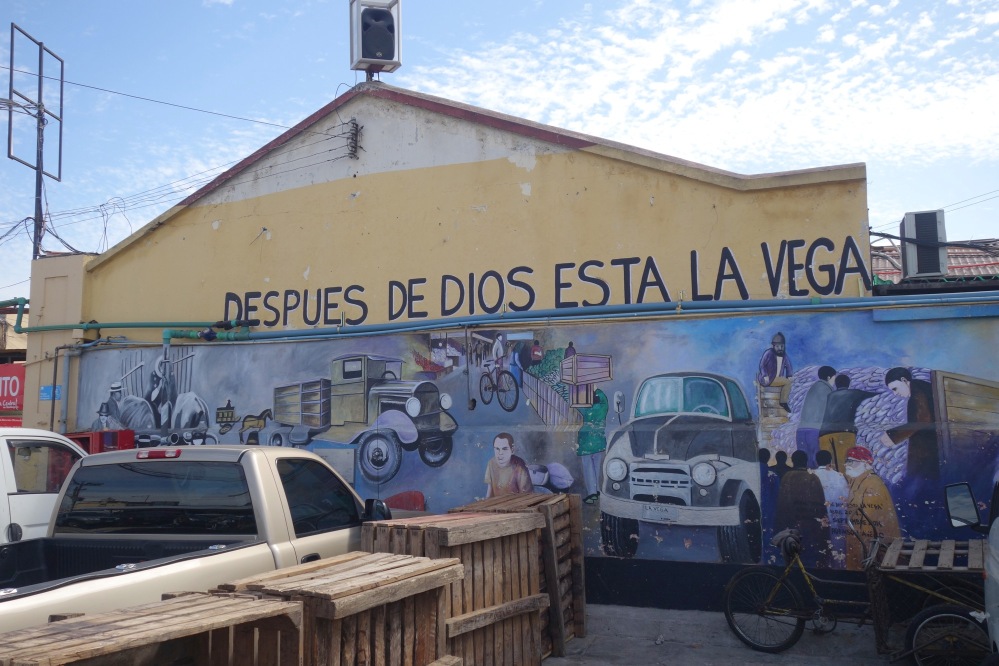
It means ‘after god is the Vega’. So since Chile has had it’s fair share of disasters and after a disaster the community won’t wait for the government to act but will collect all the stuff that they can afford to give away and try and help other people in the Vega. Also you find a lot of food at very reasonable prices in this market.
So from here we took the Metro to the cemetery. The metro system is very clean and works very well. They have frequent trains and even flat screen TV’s on the stations:
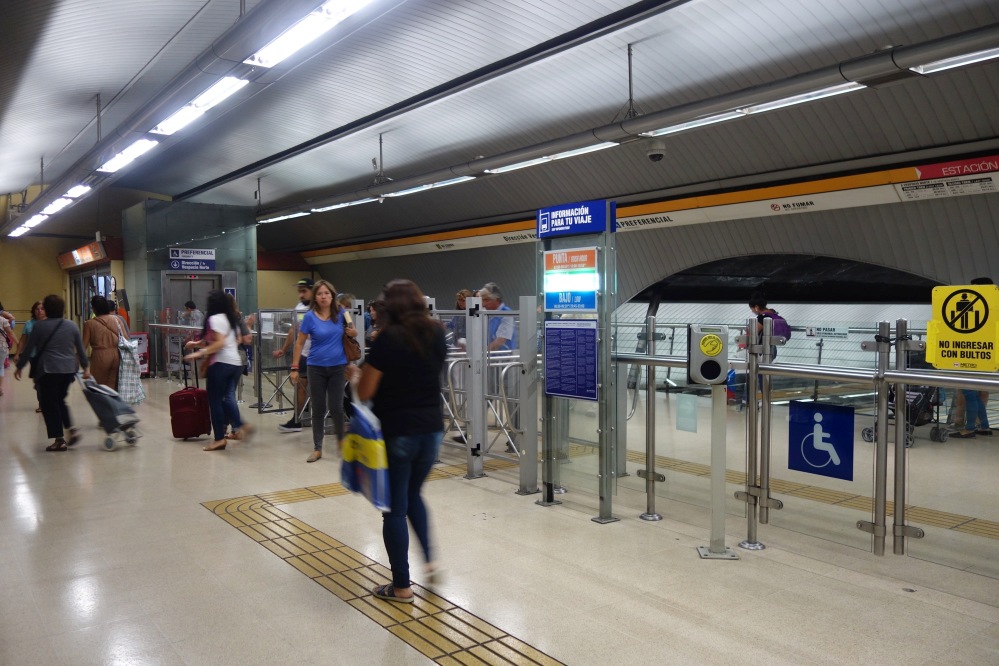
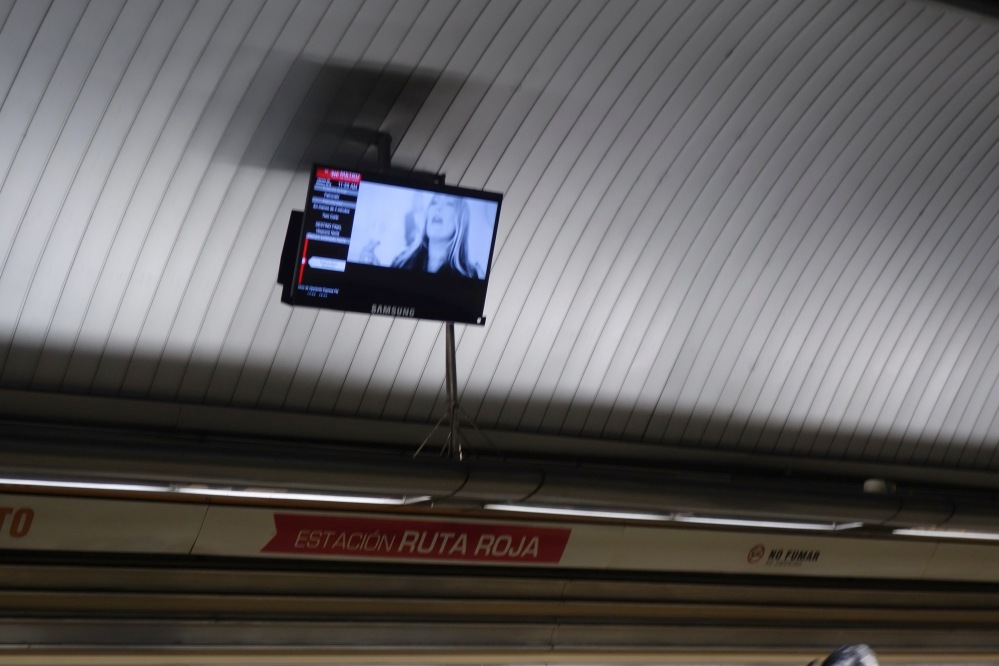
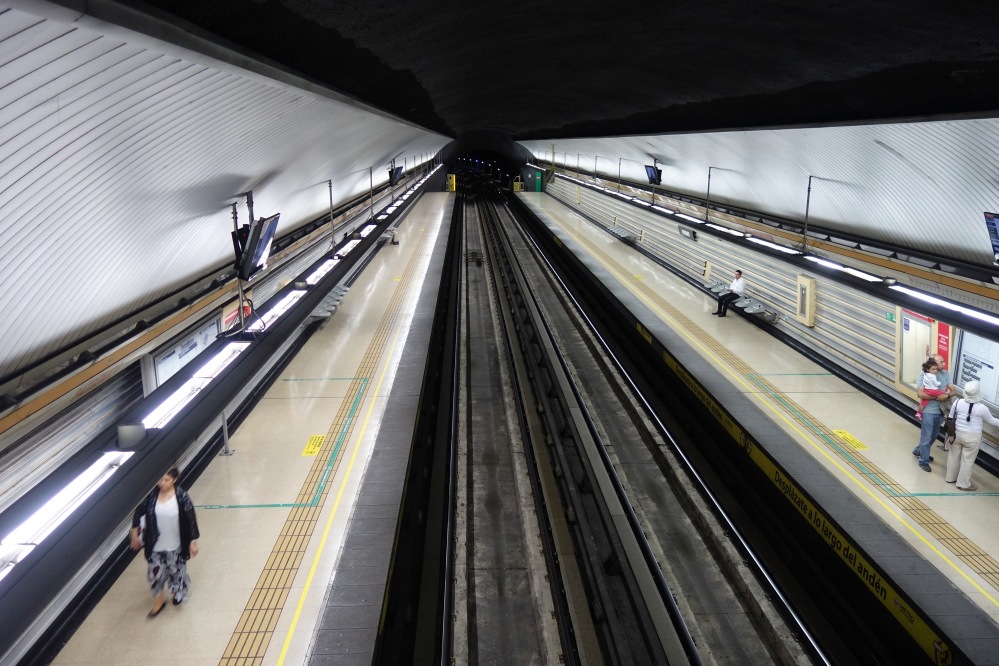
Founded by an Irishman and Chile’s first leader/dictator, Bernado O’ Higgins in 1820, Cementario General de Santiago is the biggest in Chile and is home to both paupers and presidents.
Initially it was only for Catholic people, so it was becoming a health issue as the rest of the families did not have anywhere to bury their loved ones. So they were using the surrounding hills or even their backyards. There were even cases where a random dog which dig out the corpses. Things were getting really messy so they finally convinced the catholic church to accept more people in the cemetery. The catholics initially carved out a huge wall to separate the catholics however after a while they moved to another cemetery purely for catholics.
So the cemetery is so big that they don’t use square metres to measure it anymore. They use the ‘football pitch’ scale. So with 2m people resting here, you could fit 117 football pitches in the cemetery. This cemetery is so busy that they have a TV screen to show where the funerals are happening:
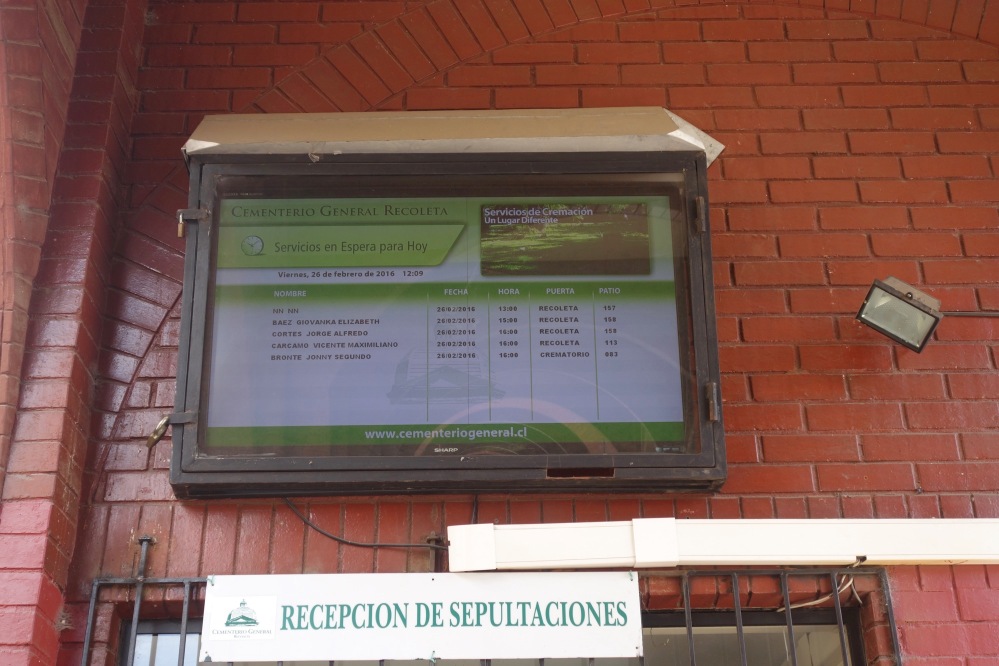
Most unusually, much of the occupants now rest in nichos which make up huge columns which can be up to four or five levels high and can be five hundred metres in length. This is the most inexpensive form of burial in Chile and it means that occupants can avoid the shame of burial in a mass grave which is still common in the country.
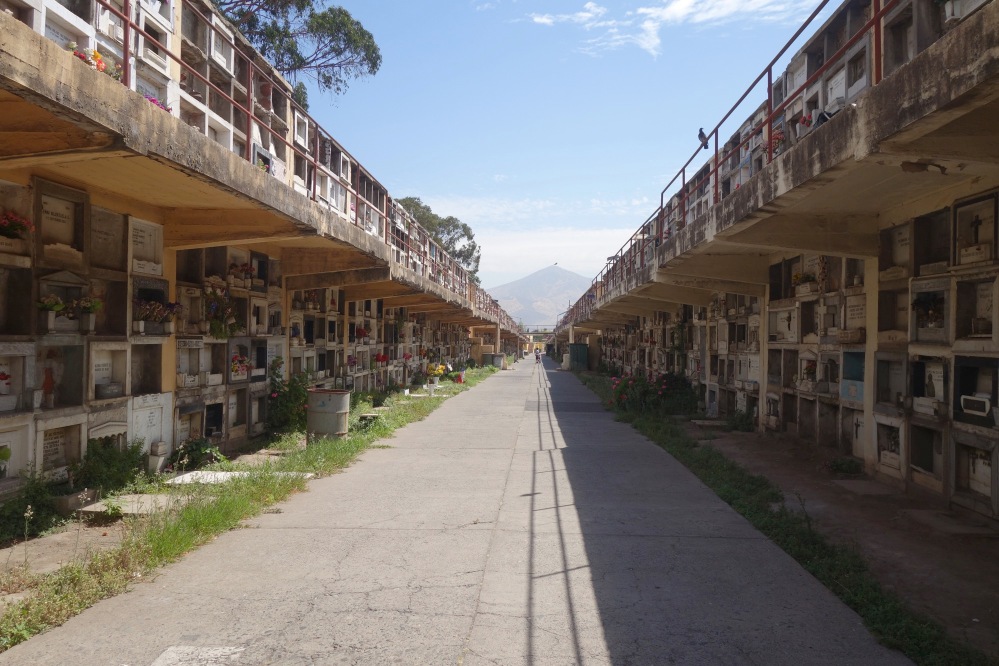
The nichos are still expensive at around USD 3,000 for eternity however this is expensive for most Chileans so there is the option to rent a Nicho. When you pay for your own Nicho – the word Perpetua appears on your Nicho which means for eternity:
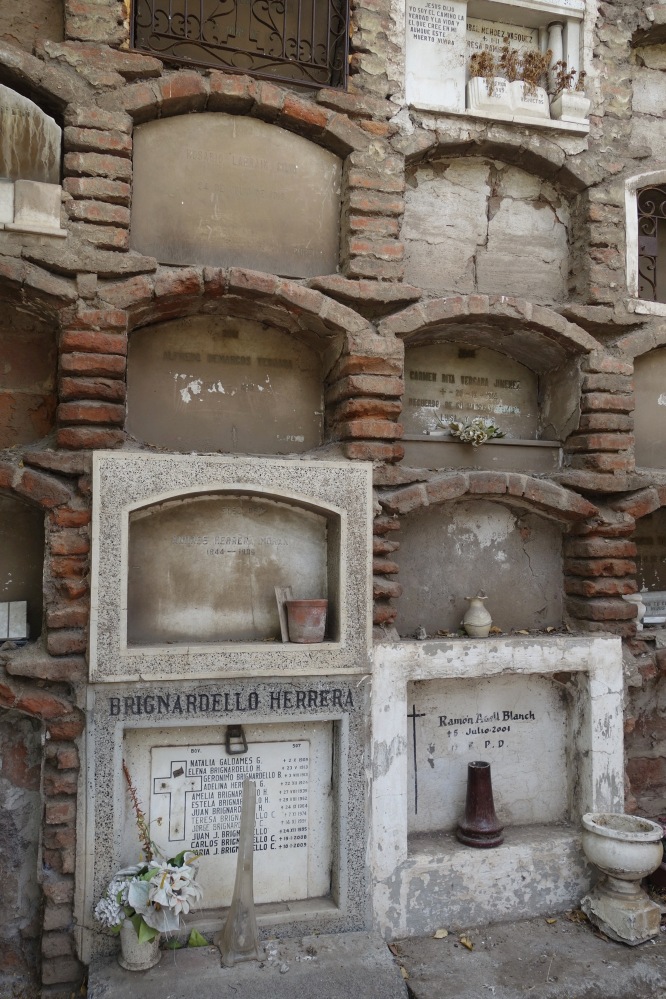
Some nichos hold several generations of one family with graves dating back to the early nineteen hundreds now only being closed after the death of a relative in more rece nt times. So each Nicho is about big enough to hold one coffin. However to accommodate more generations they would open the coffin, take the remains, put it it an urn and then put that alongside the new coffin, every time someone new is buried. We saw one with 12 generations buried inside:
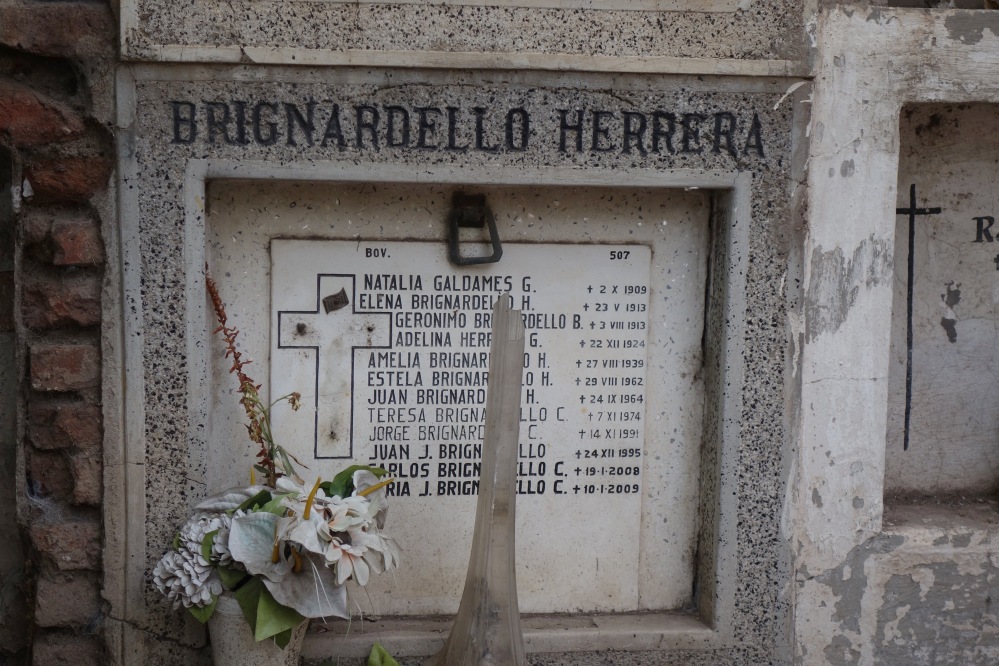
And you can see there is more space at the bottom for more people’s names. At the moment it’s been exactly 100 years from the first one to the last one. What is interesting is they don’t put the birthdate on the nichos. This was mainly because a lot of the people from the countryside would get buried there and they wouldn’t have a clue what their birthdate was then it just turned into a tradition.
The most popular nichos (poor but popular) have a lot of decoration around the Nicho:
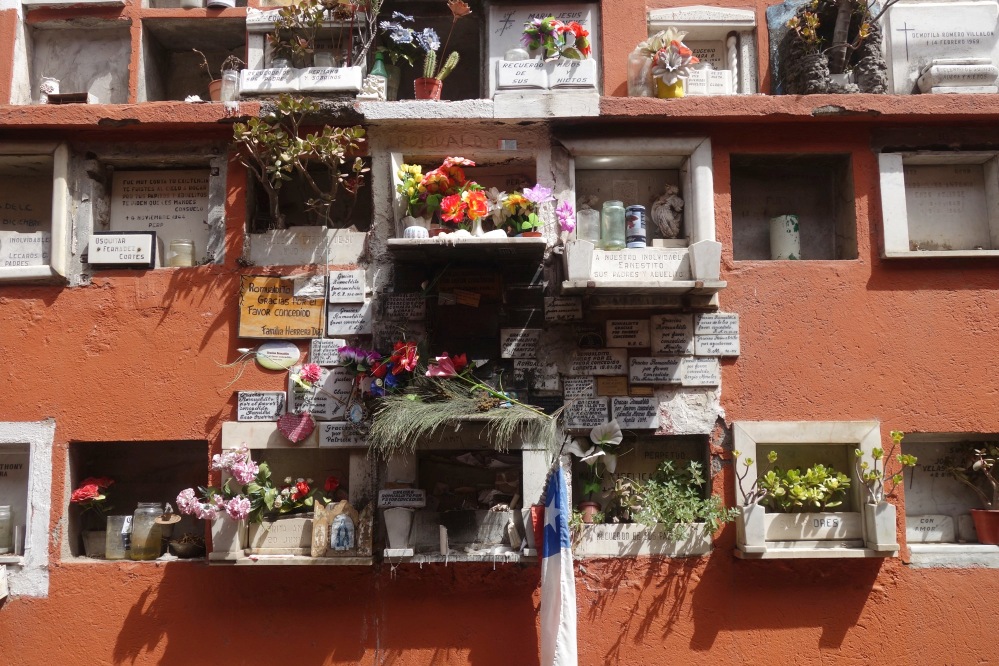
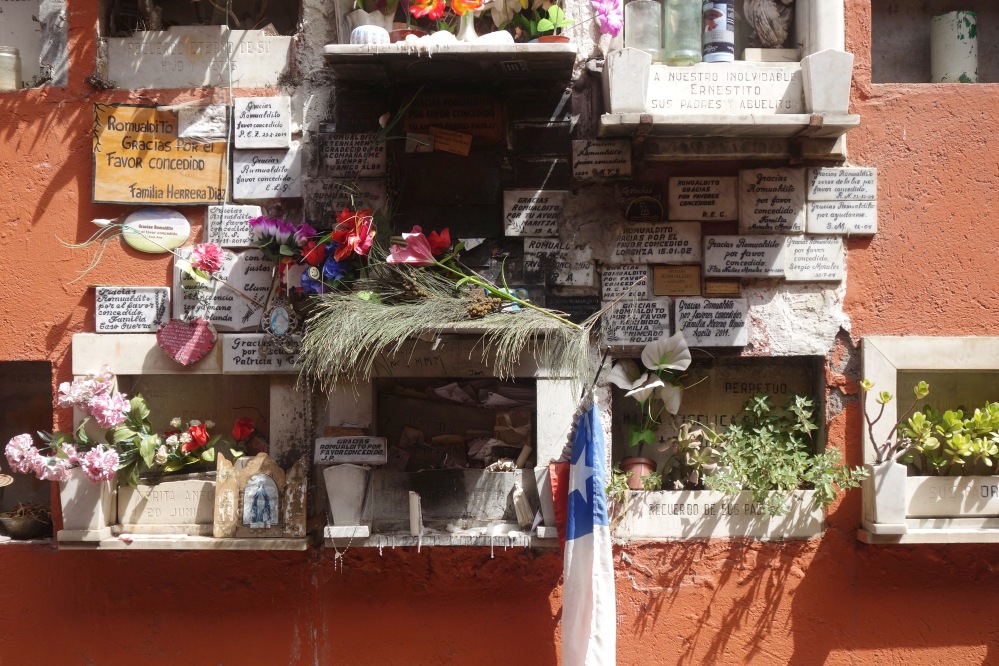
Legend says this was the nicho of an orphan called Romualdito who had a disability & was selling sweets at the local market, but he won the hearts of the community who really loved him. One night he was mugged and stabbed and died. So the people believe that because he had such a pure soul and died in such a horrible way, god would want to compensate him by keeping him really close. Then people started to think it would an easy way to reach gods ear so started to ask for wishes. After any wish came through they would leave a plaque of gratitude. However the Church was not happy with this as they should say who is a Saint and who isn’t. Therefore they got the police to go and remove the plaques. The police sent one man at night to go and remove the plaques. On arriving the floor was very slippery from all the wax and candles and the horse fell and the policeman fell and hit is head and the horse fell on top of him and broke his legs. The officer was found the next day dead. After that Romualdito’s followers were even more convinced that this was the work of Romualdito telling everyone to leave him alone.
Alongside the nichos are the mausoleums of the super-rich of Chilean society who are housed in extravagant tombs. The contrast between rich and poor is striking, yet inevitably they share the same soil and aspect of scrubland on the low lying hills nearby.
So this was the tomb of anyone with Spanish or European blood which would automatically grant you a higher status in society:
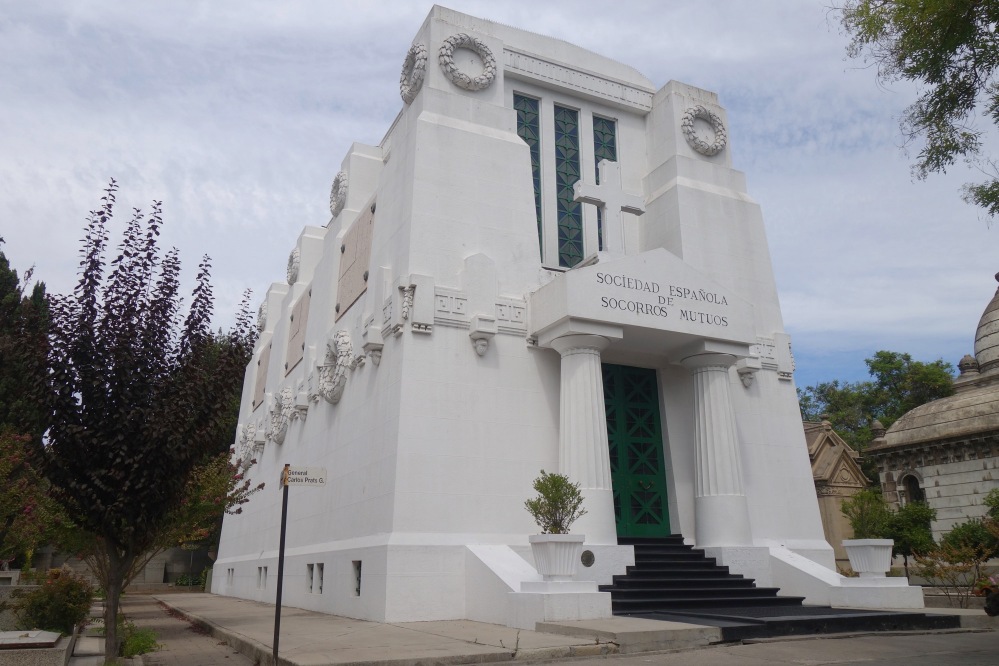
This next one is for policeman which was seen as a very honourable way to be buried:
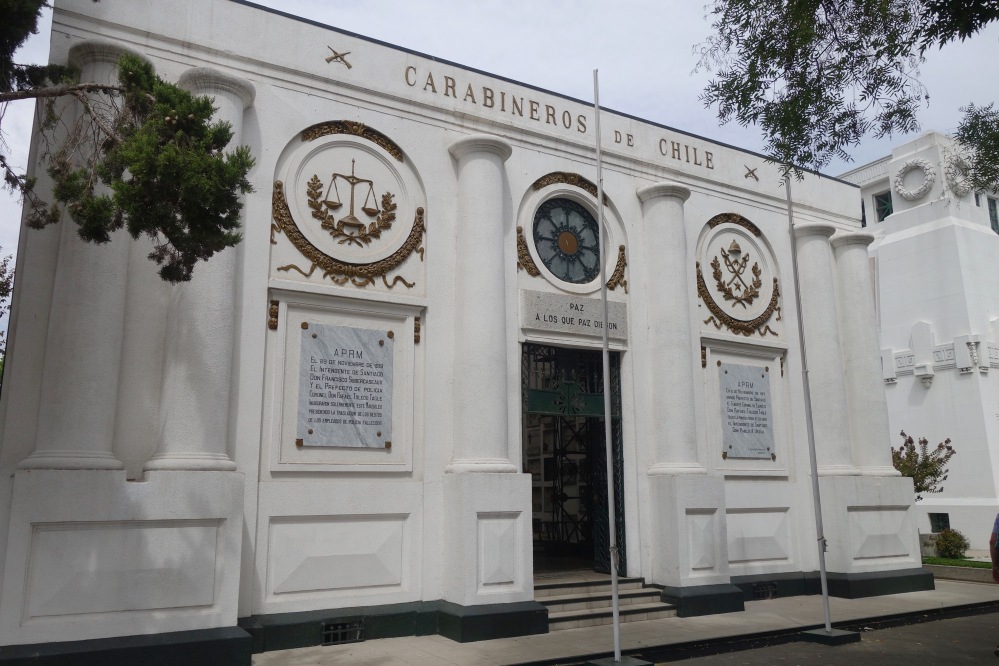
These are all of very rich families:
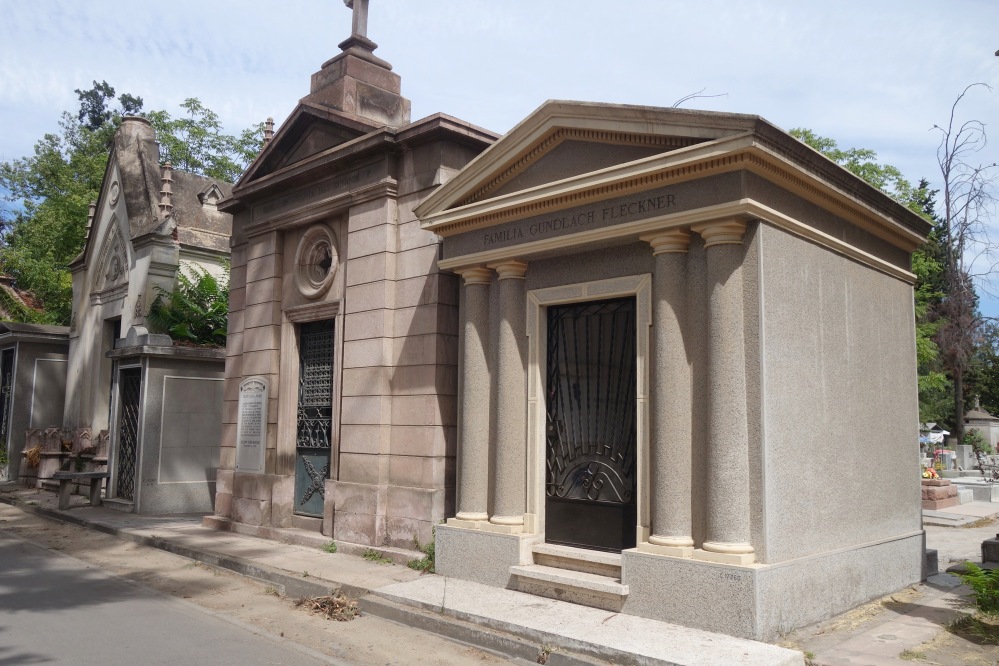
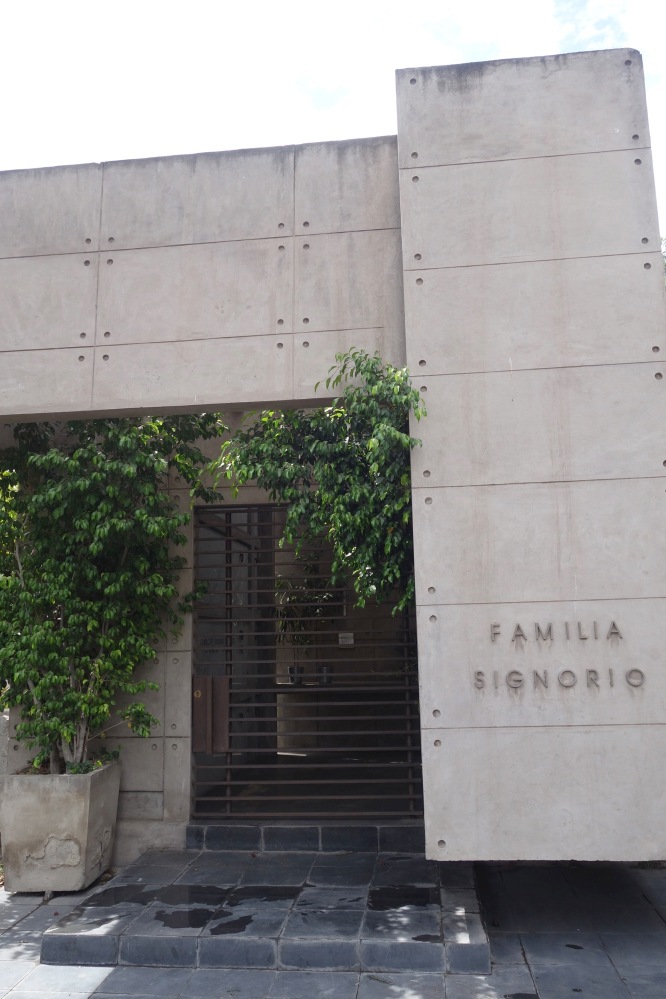
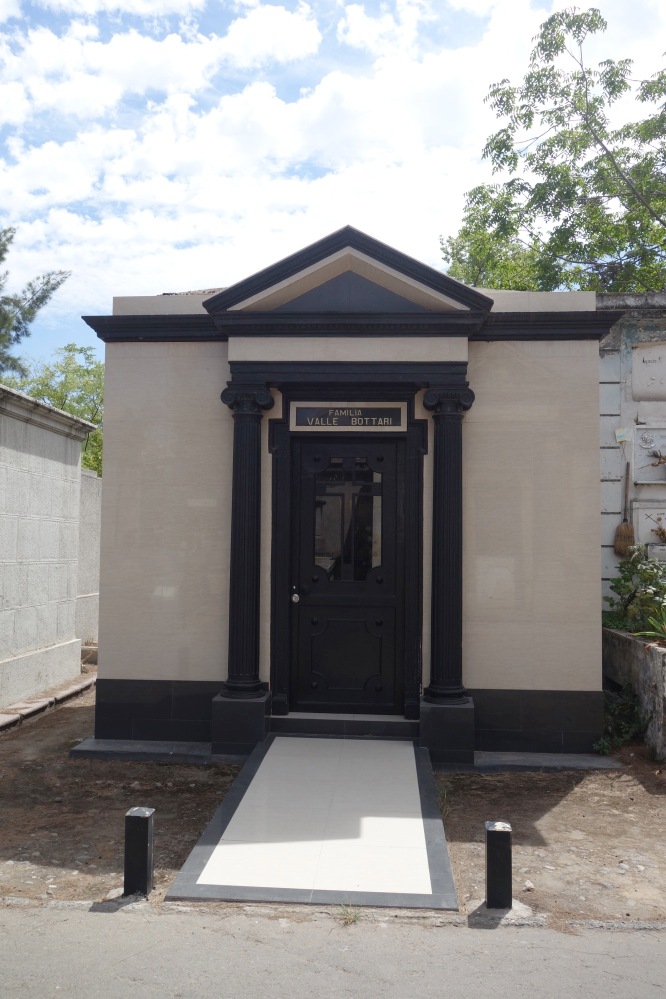
So this next one, his family and friends knew him well so come and visit, have a beer and leave the empty bottle on his grave as a tradition:
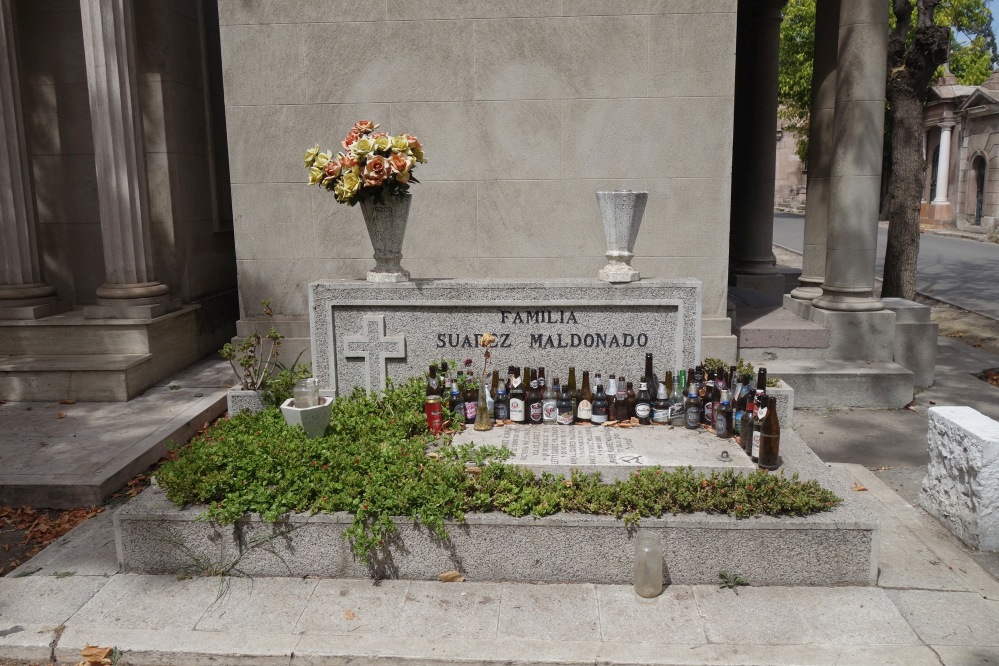
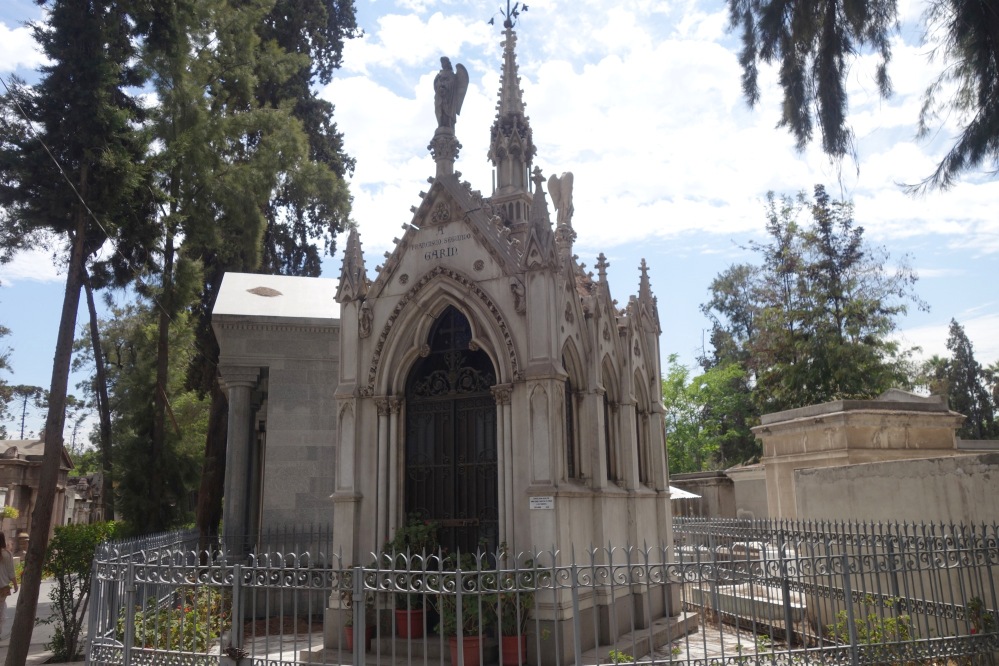
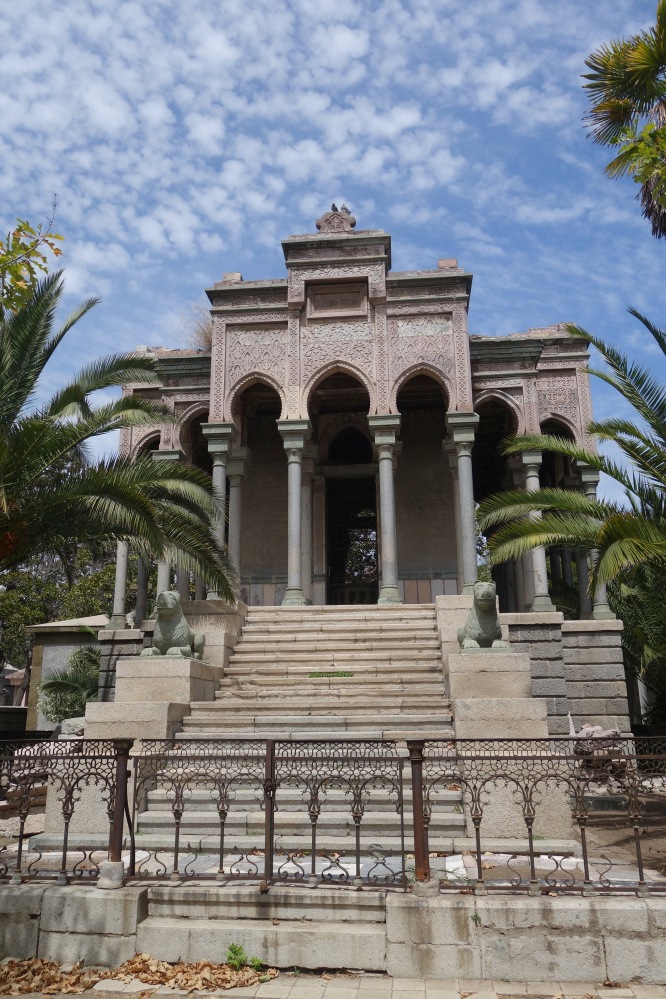
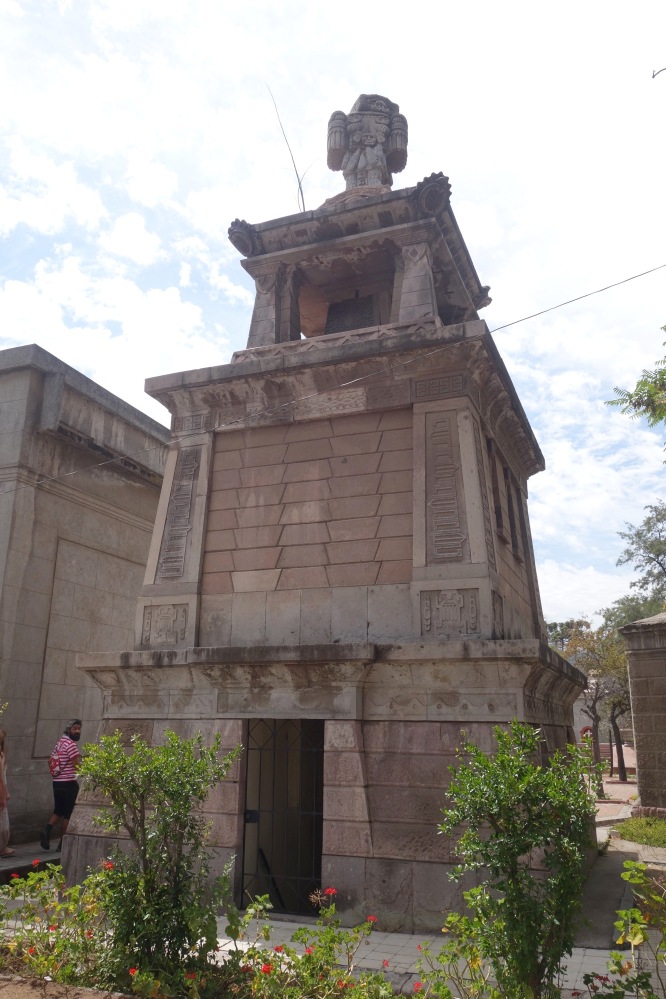
The effect of the many earthquakes over time:
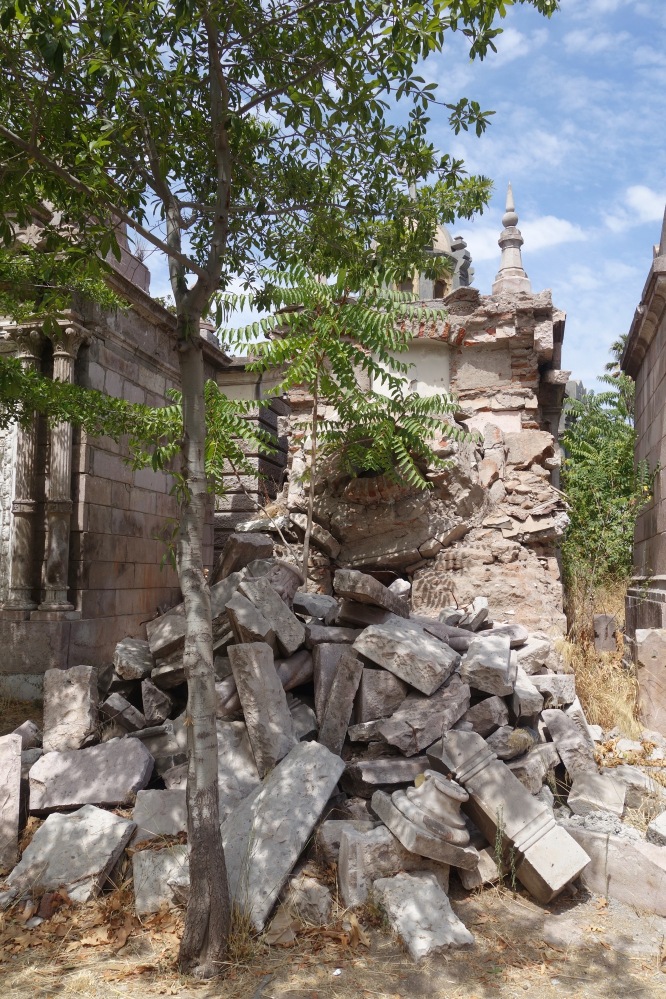
There was still A LOT more to see in Santiago. I didn’t get a chance to climb the main hill or visit any of the museums but I will be going back to Santiago so may update this post then. From here I decided to go and spend a few days in Valparaiso. However before leaving I had booked a flight to Ushuaia which is the southern most point of Argentina with a rough plan to work my way up. So I FINALLY had a plan.
Update – 25 May 2016
——————————–
So after going home I had a return flight booked from Santiago and so this time I managed to see the main Museum of Human Rights which was all about how life was under Pinochet. The museum shows it was very very bad with random people just getting abducted and tortured and there was basically no freedom of speech. The people really suffered in this period of their history.
Also I FINALLY managed to get to the top of Cerro San Cristobal. I had really wanted to climb it but what happened was the day I wanted to climb it, it was raining in the morning and afternoon. It only cleared up COMPLETELY late afternoon and there wasn’t enough time to climb it so I decided to take the Teleferico.
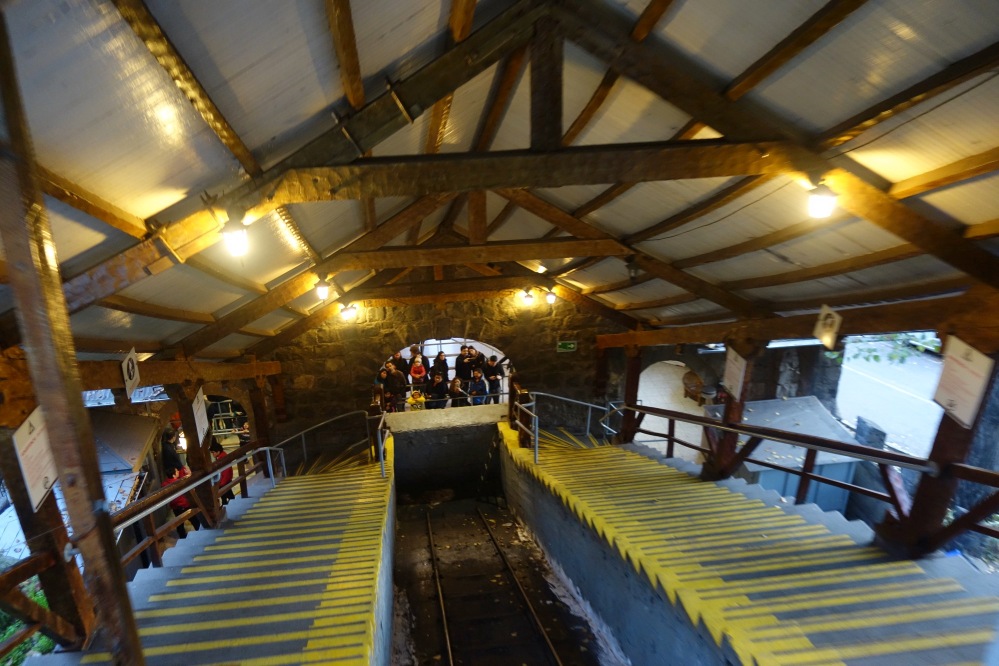
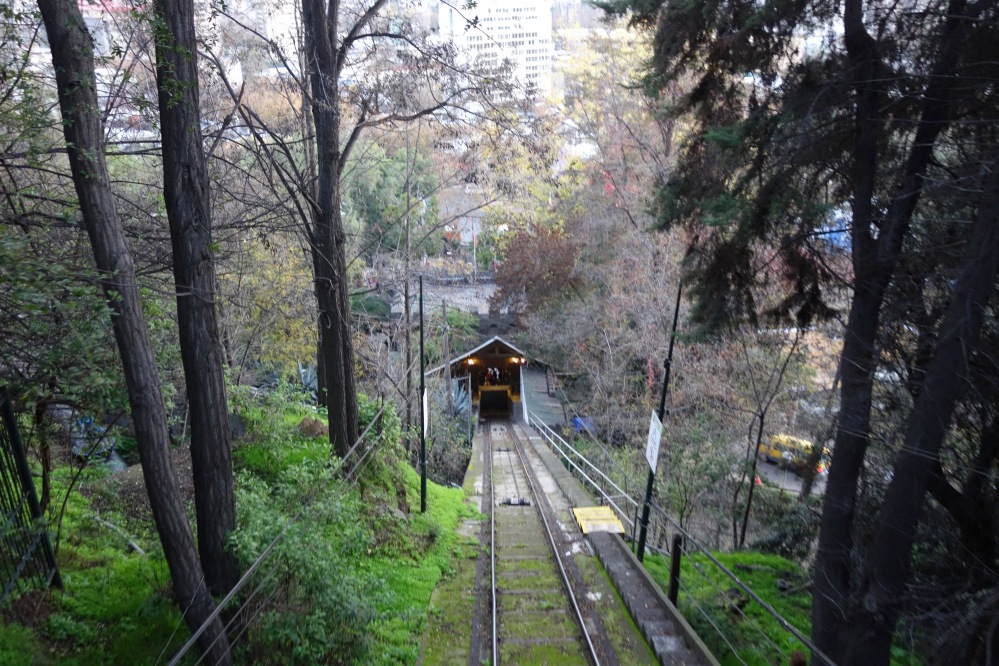
I got to the top just in time for dusk and it was beautiful:
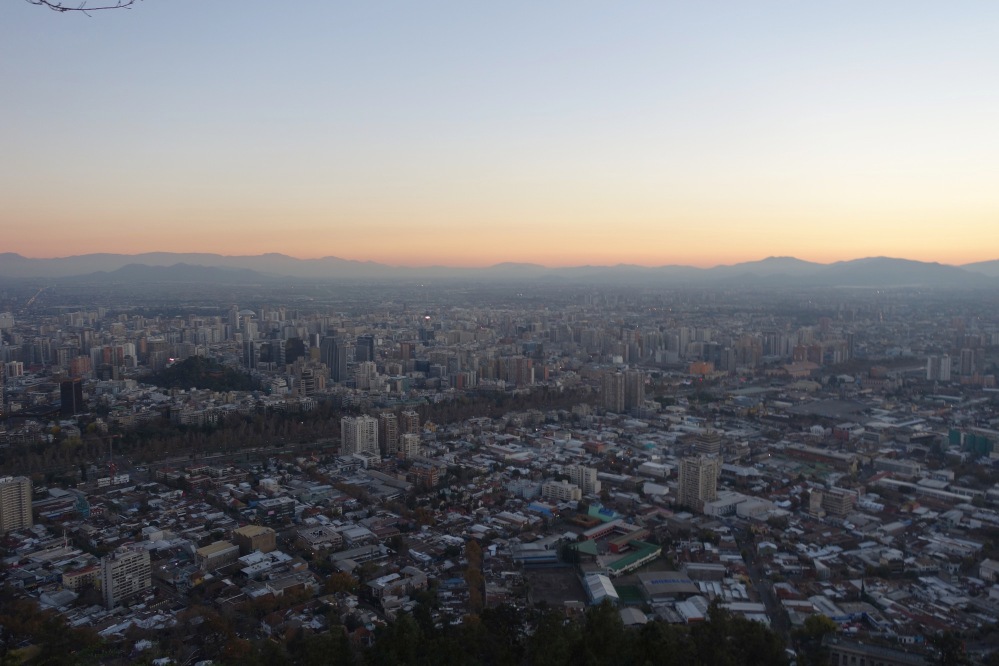
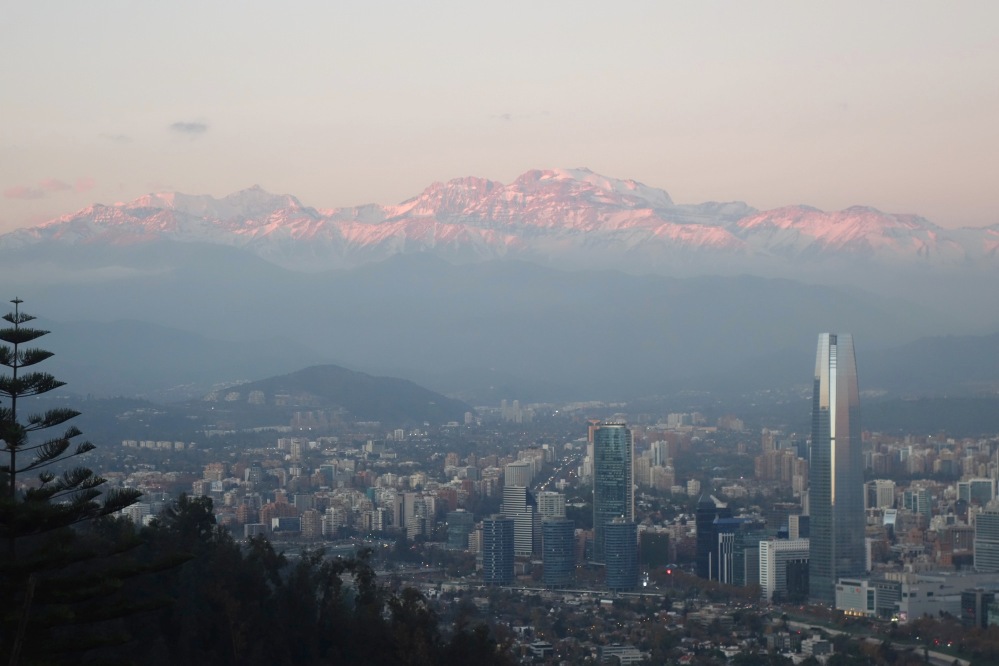

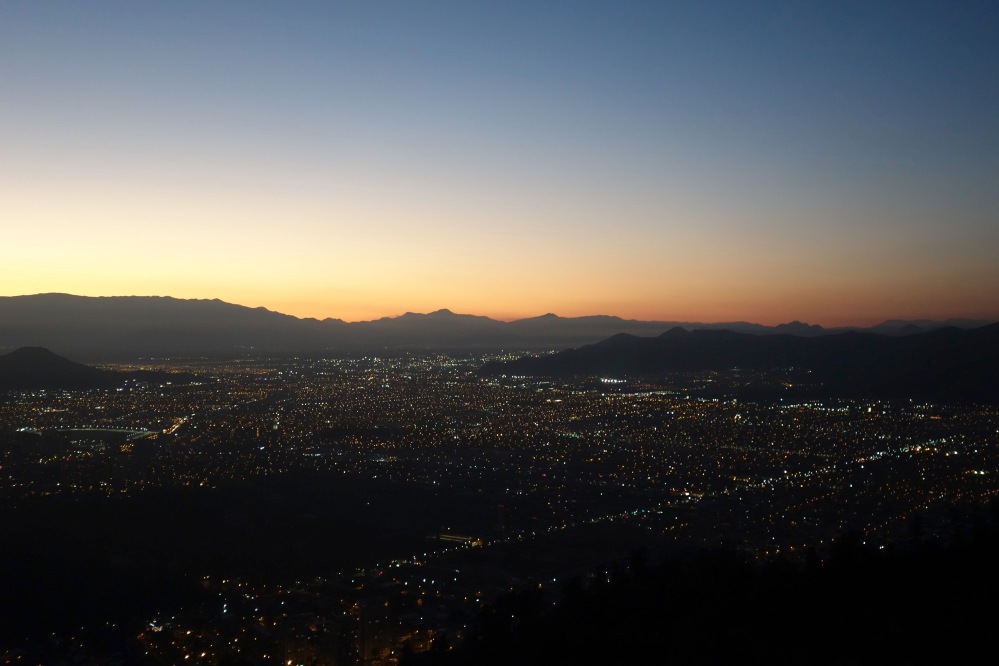
Of course no cerro would be complete without a Jesus statue:
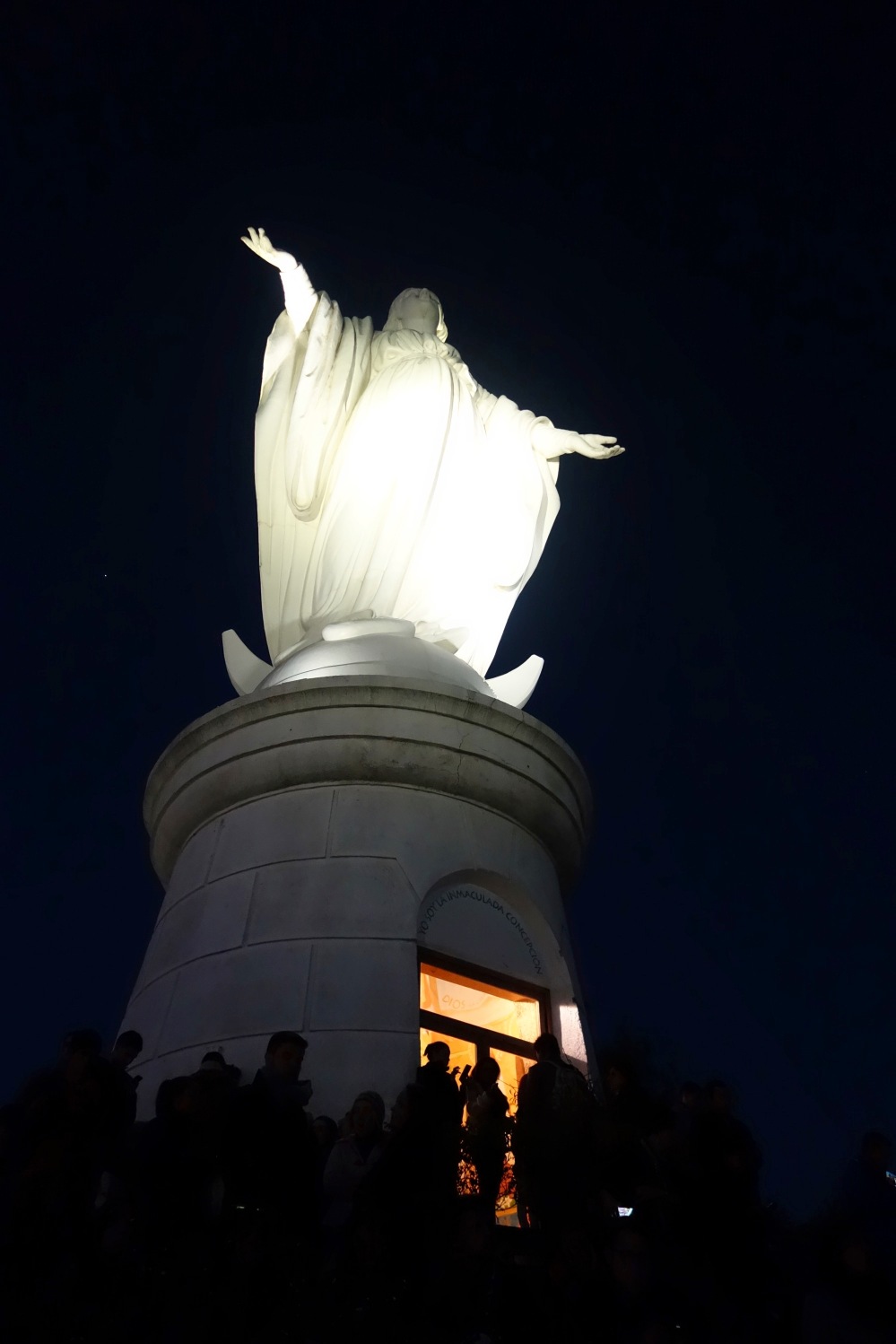
Then caught the teleferico down:
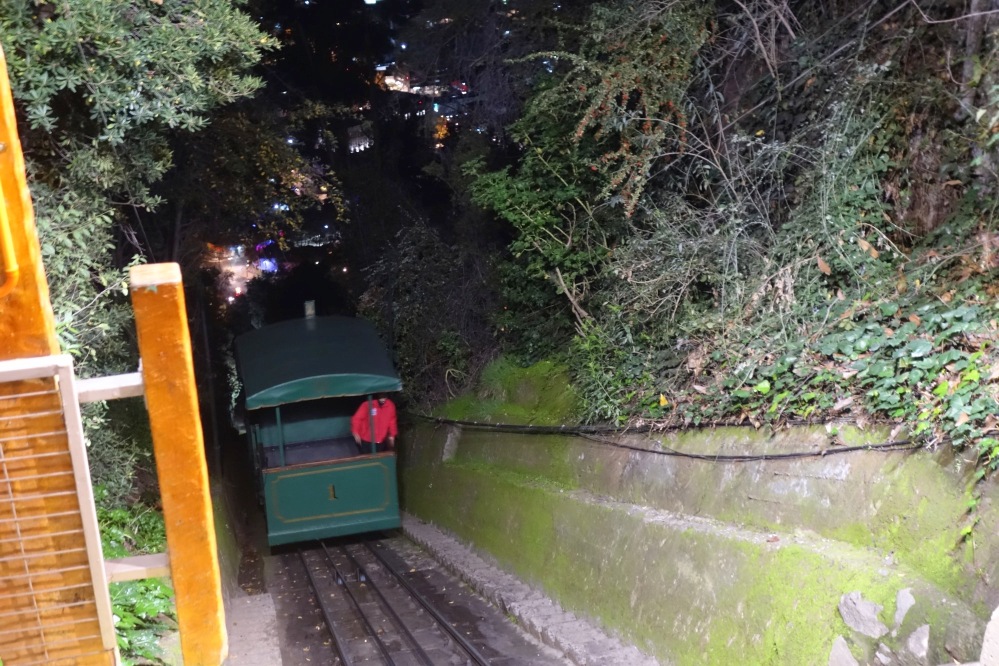
April 4th, 2016 at 12:31 pm
Dear Raja
Santiago sounds really interesting.
Lots of history again.The graveyard was funny.
I liked the presents esp the fountain from Germany.
Earthquakes zone again!!! Thank God you did not have to witness
One. Waiting for you to come home.Take care.
Lots of love xxxx
LikeLike